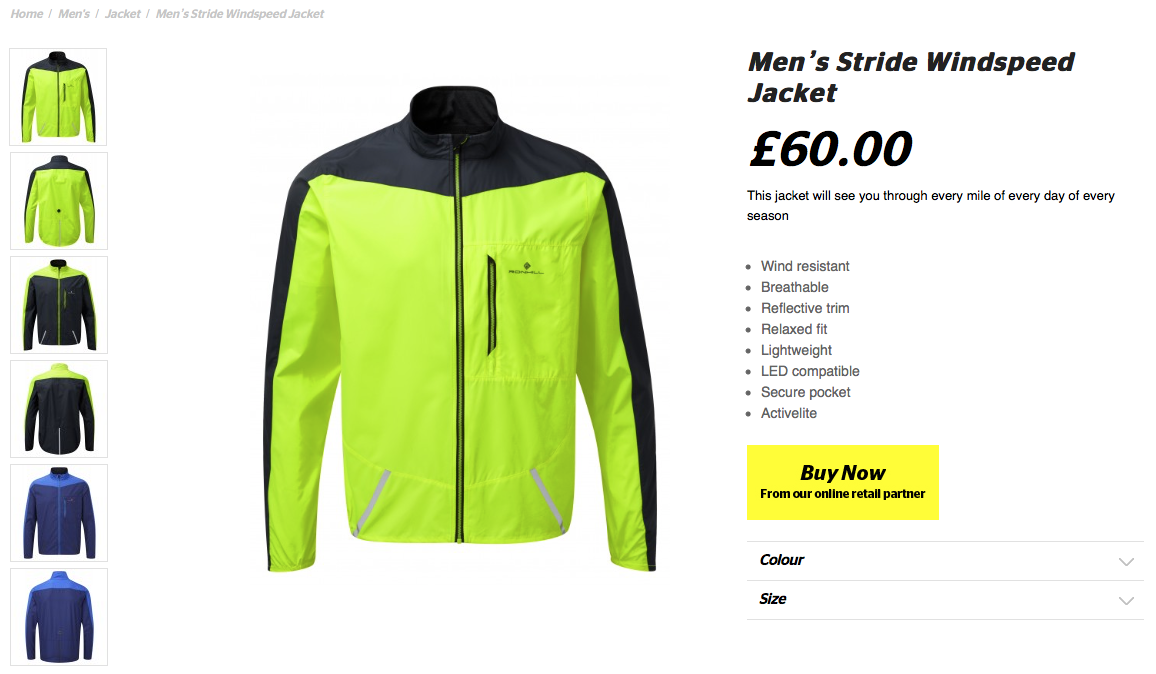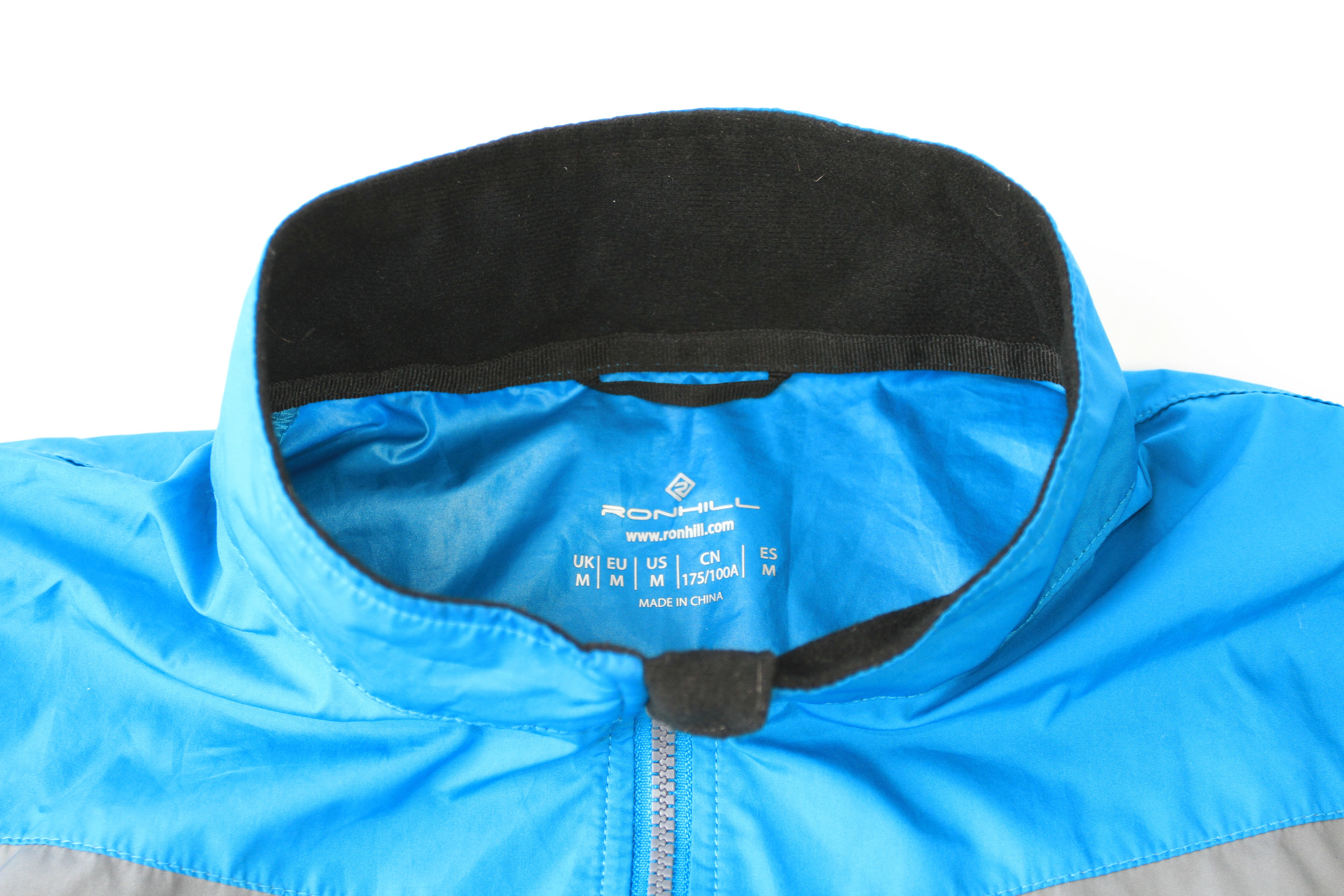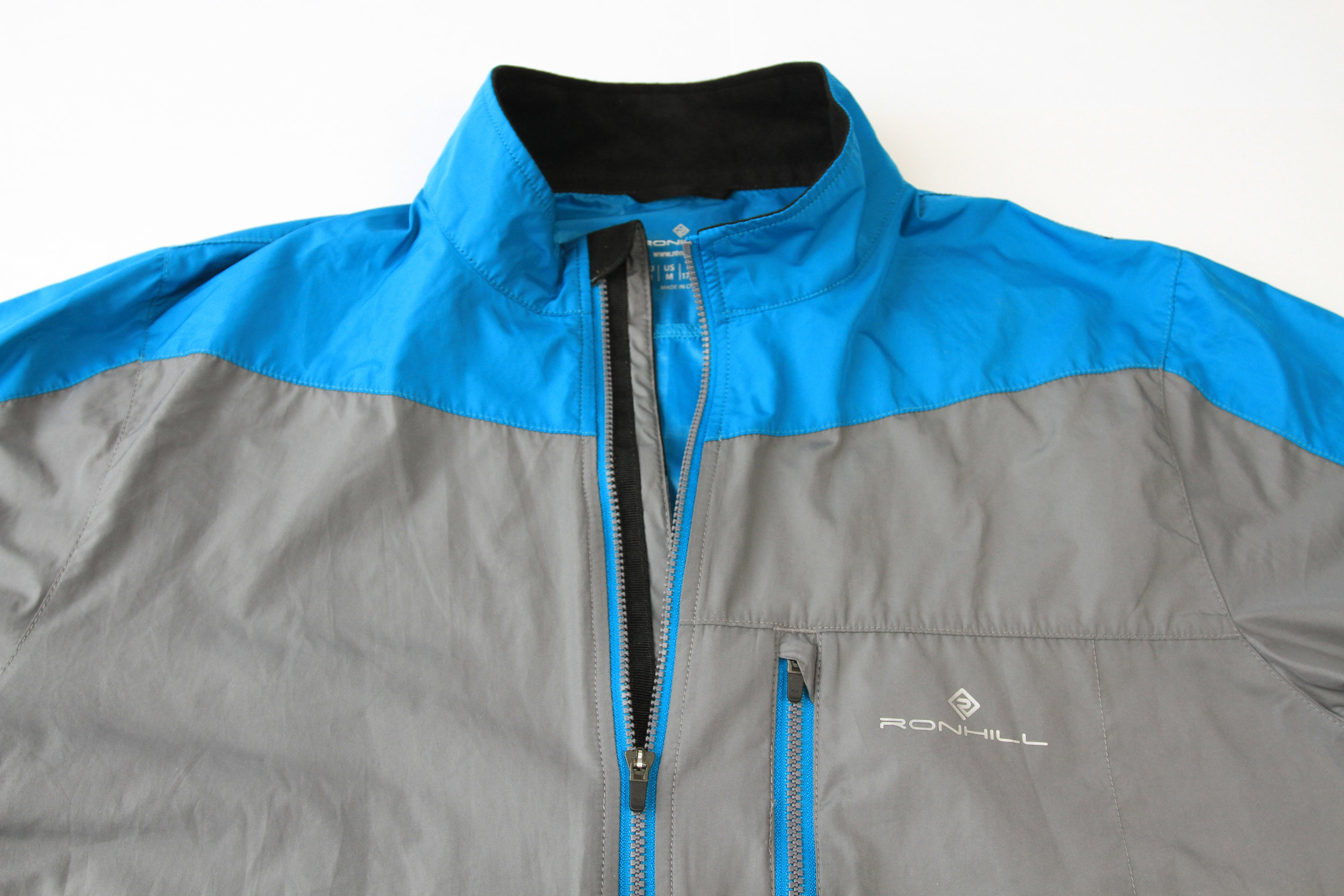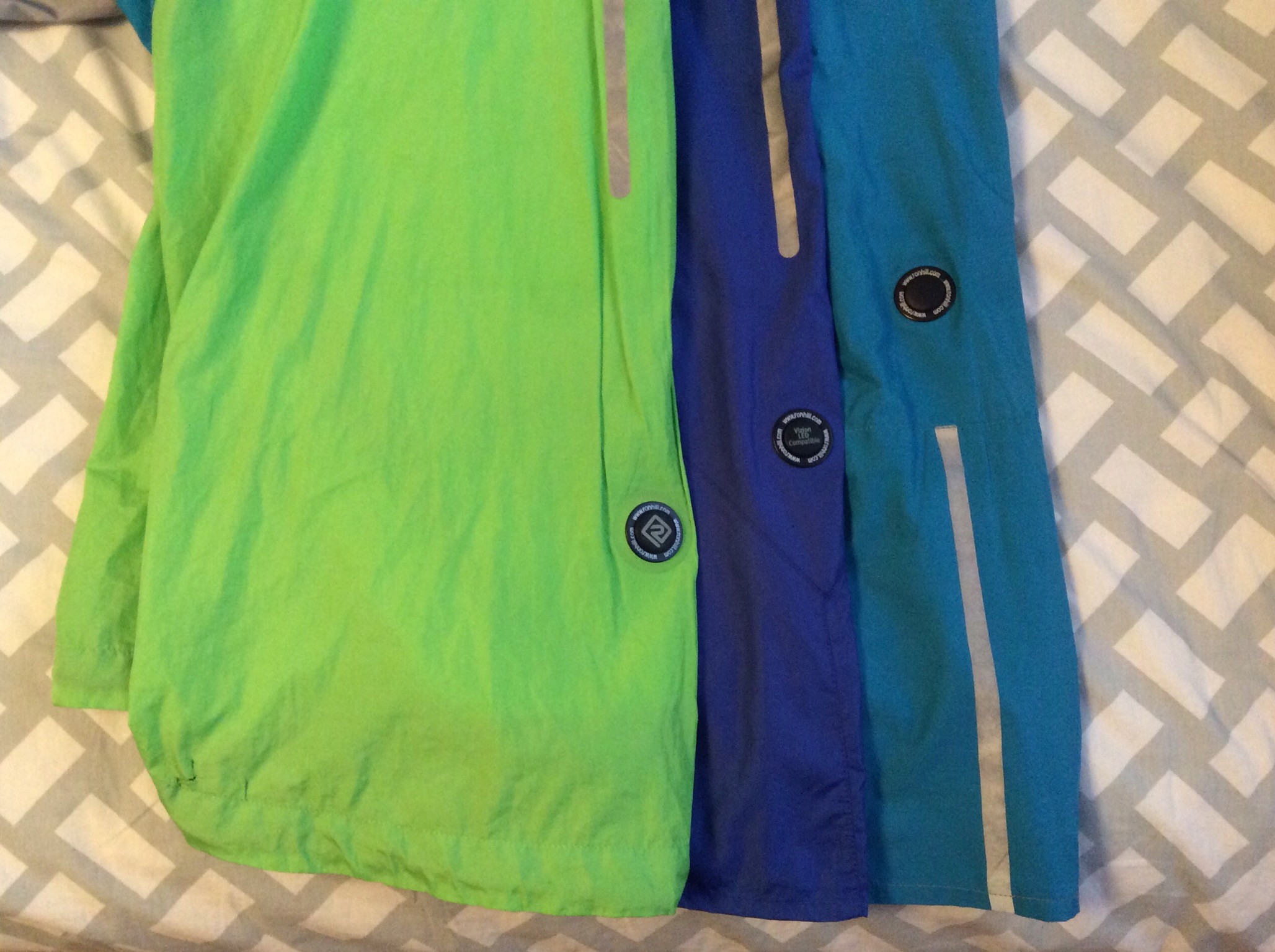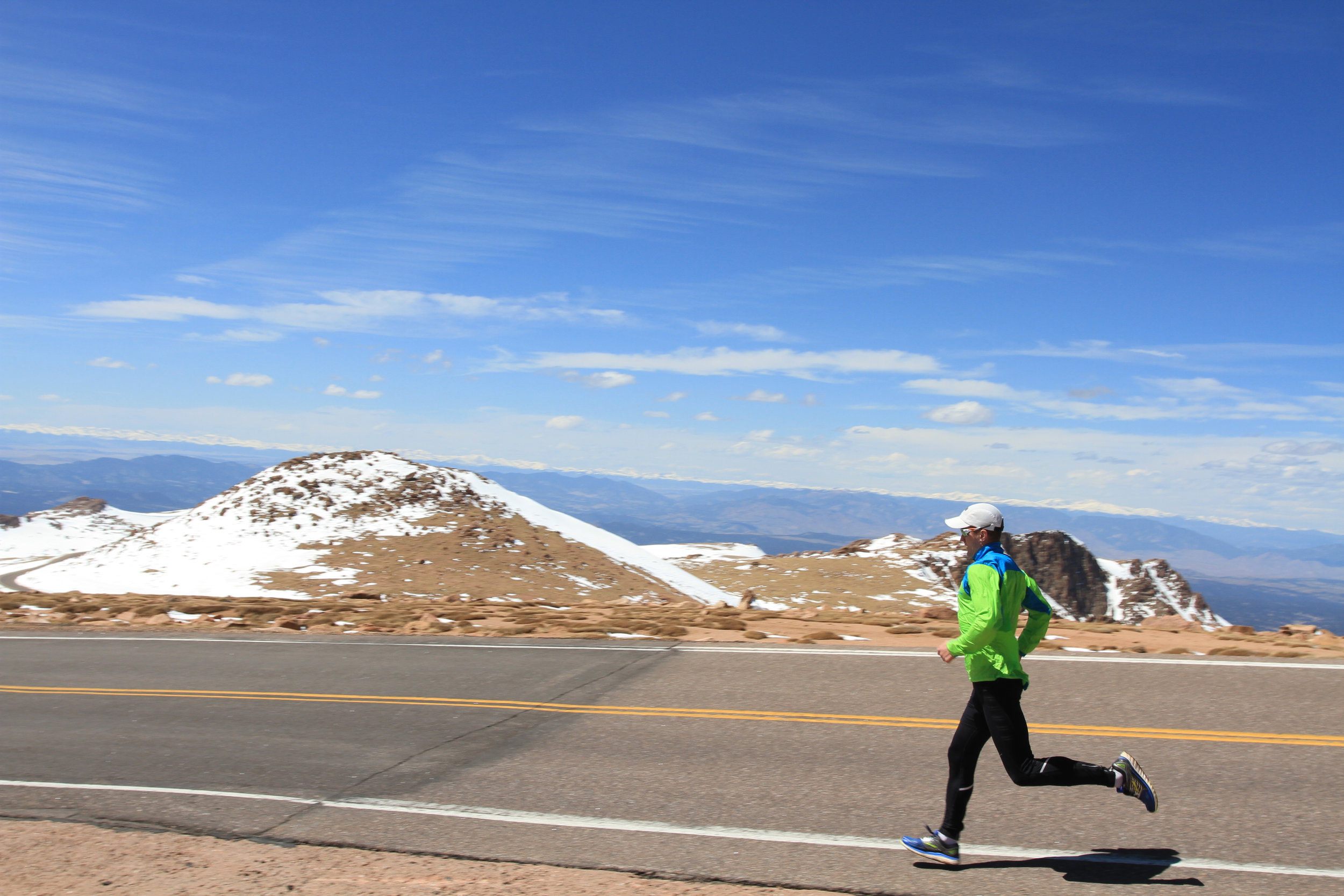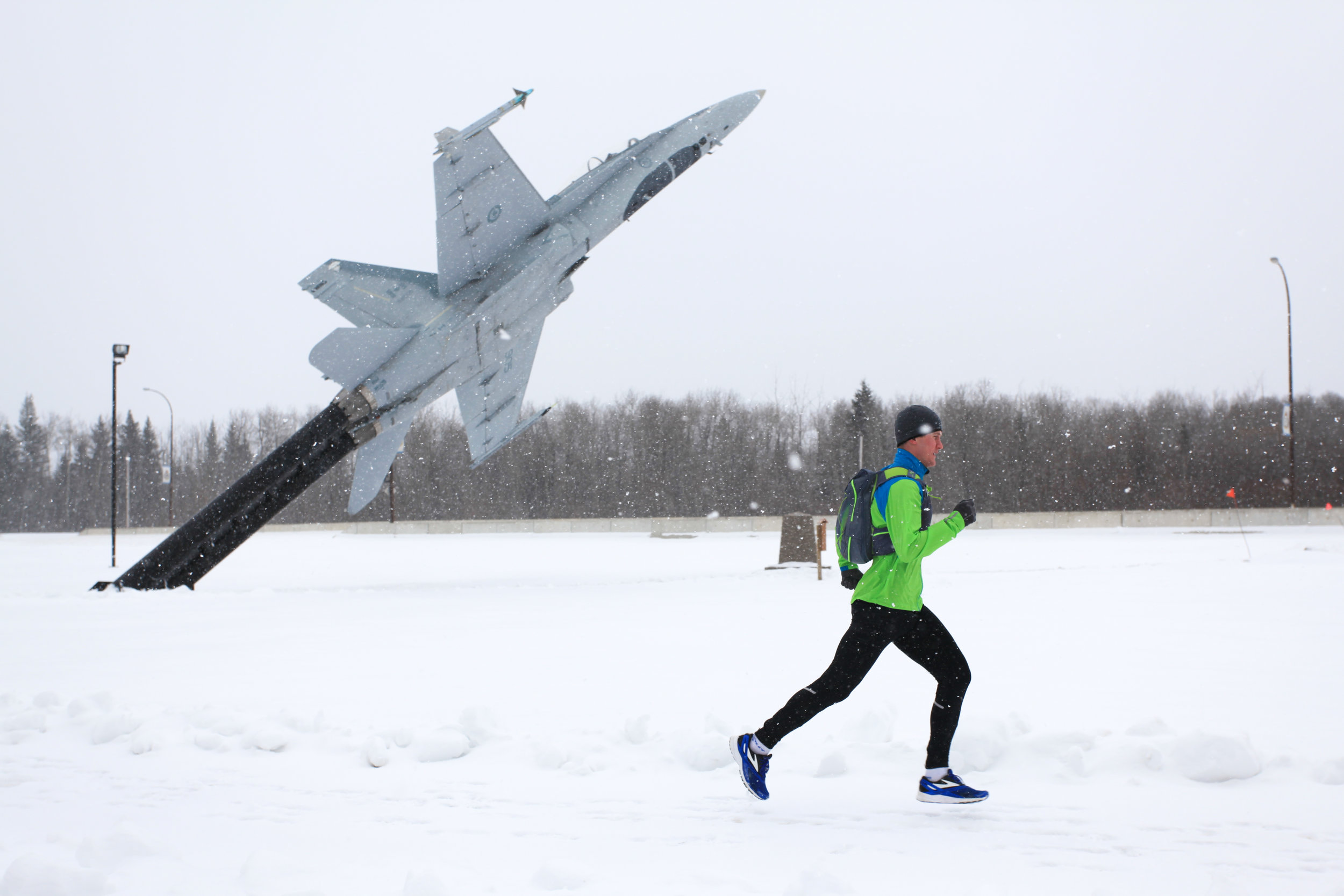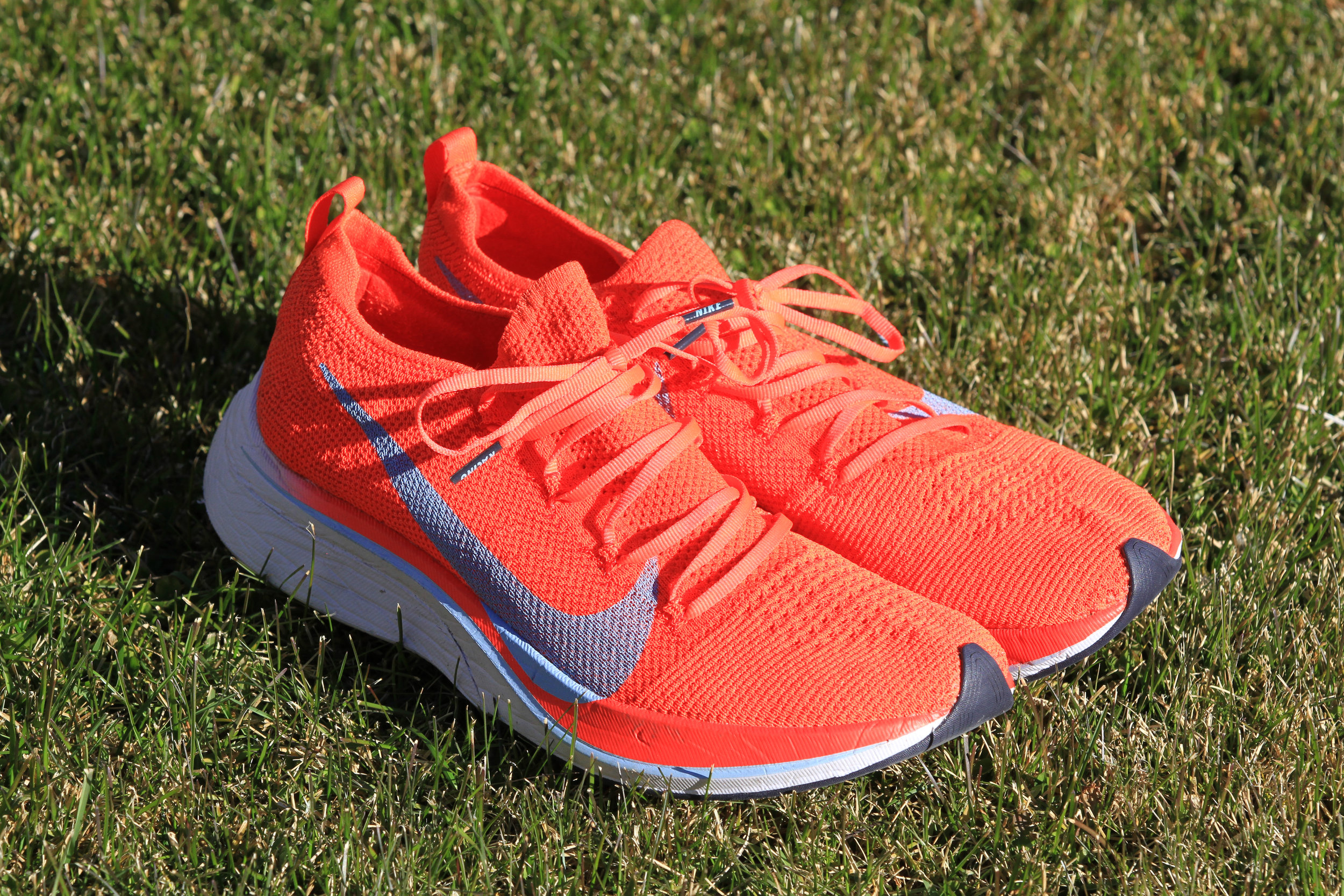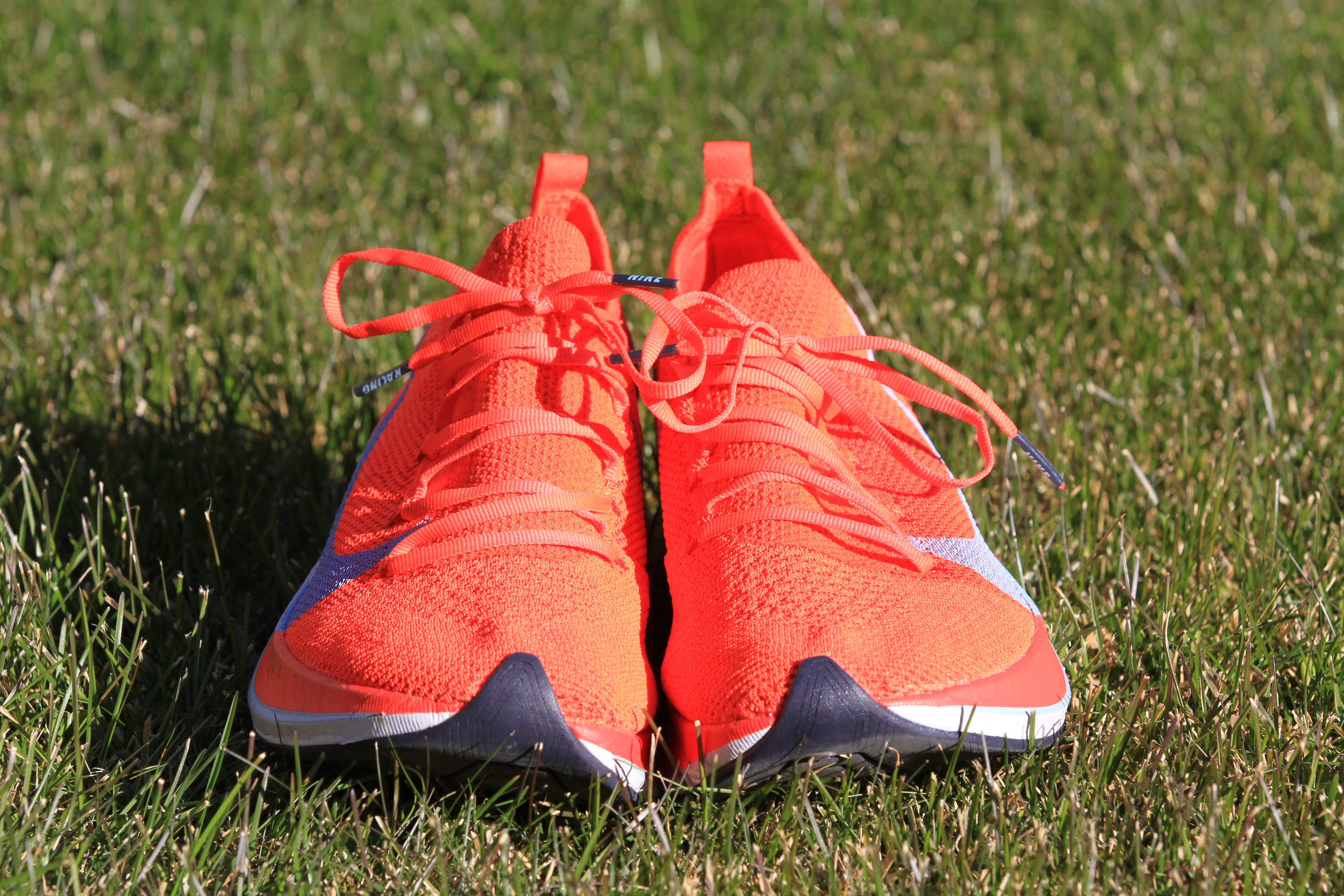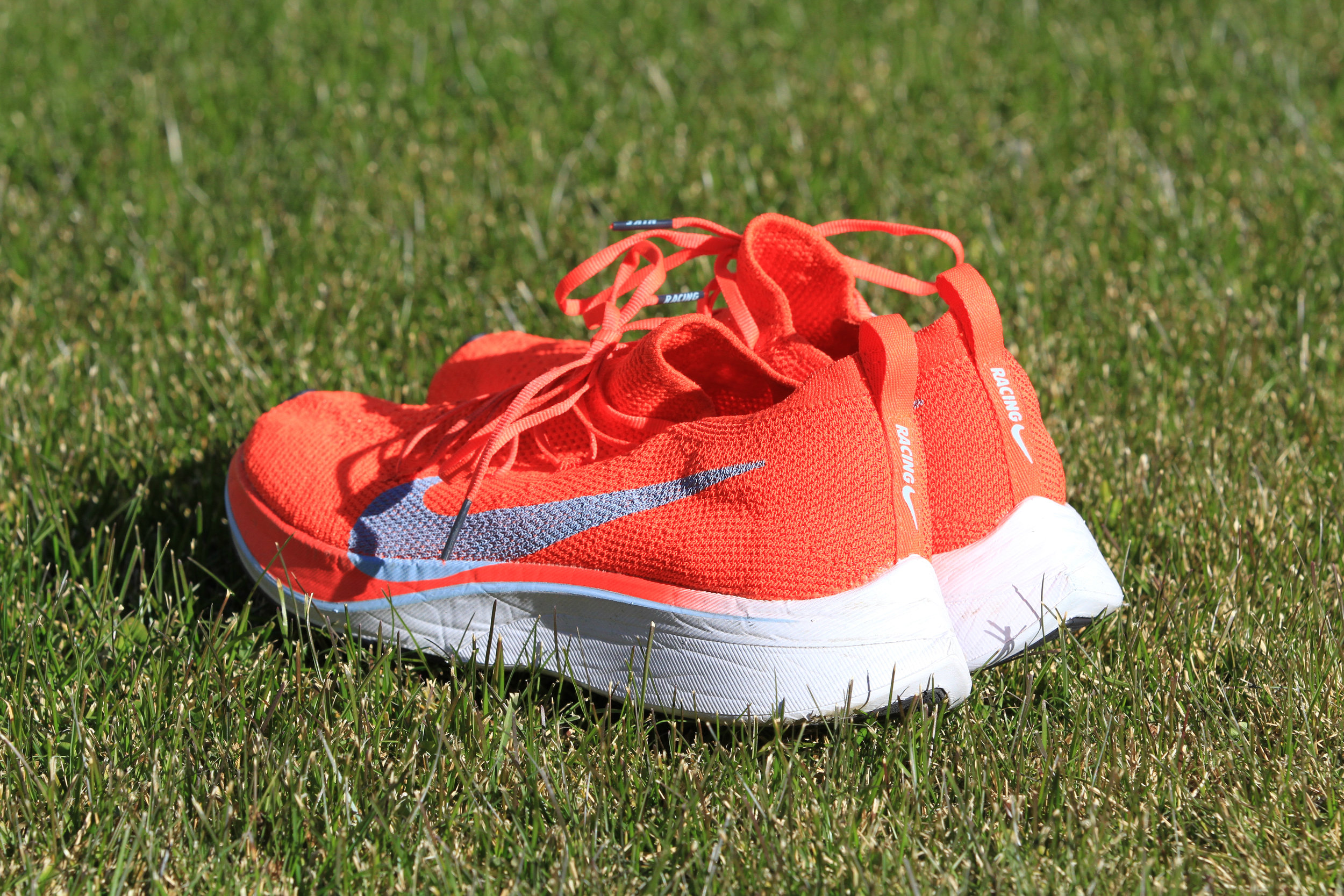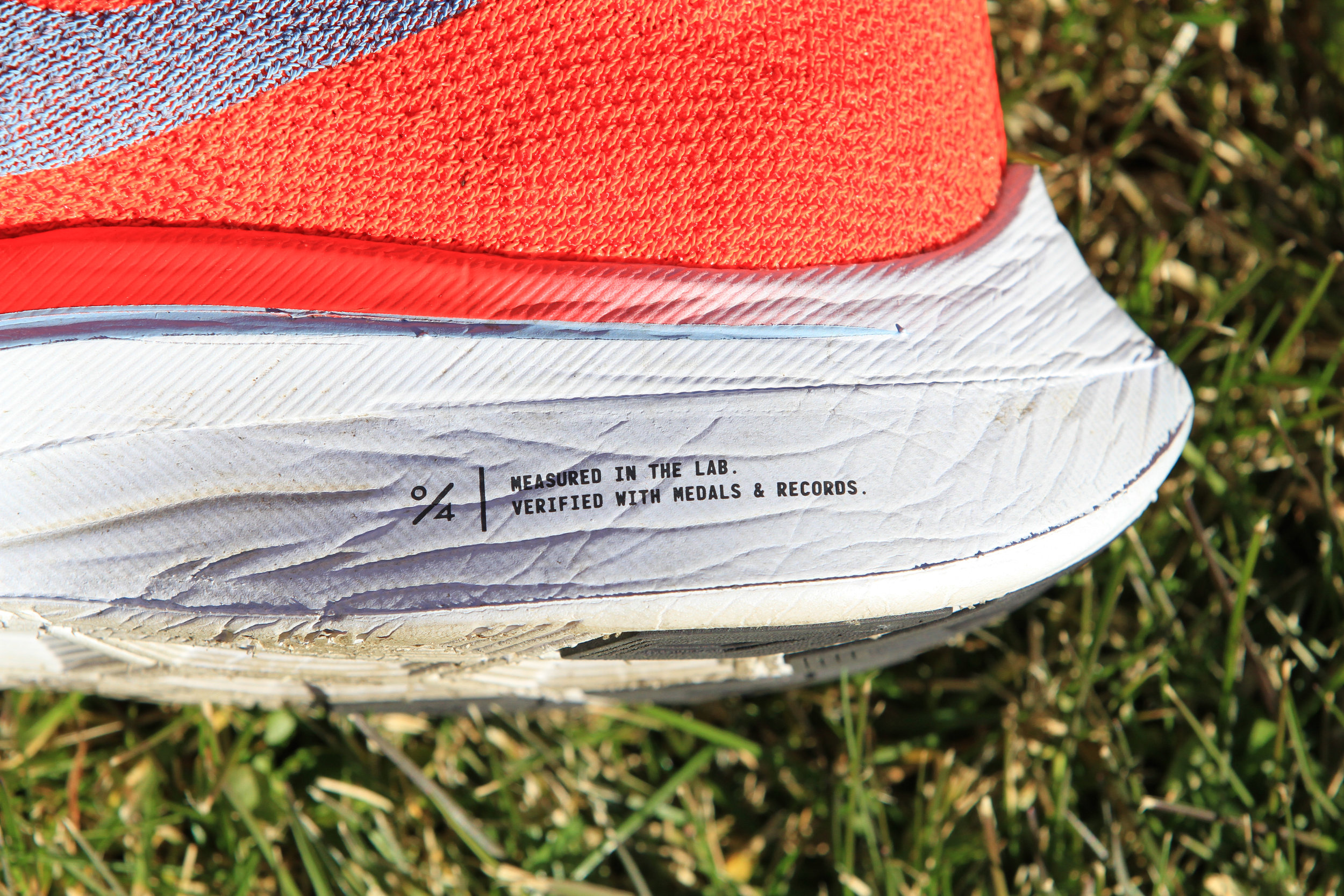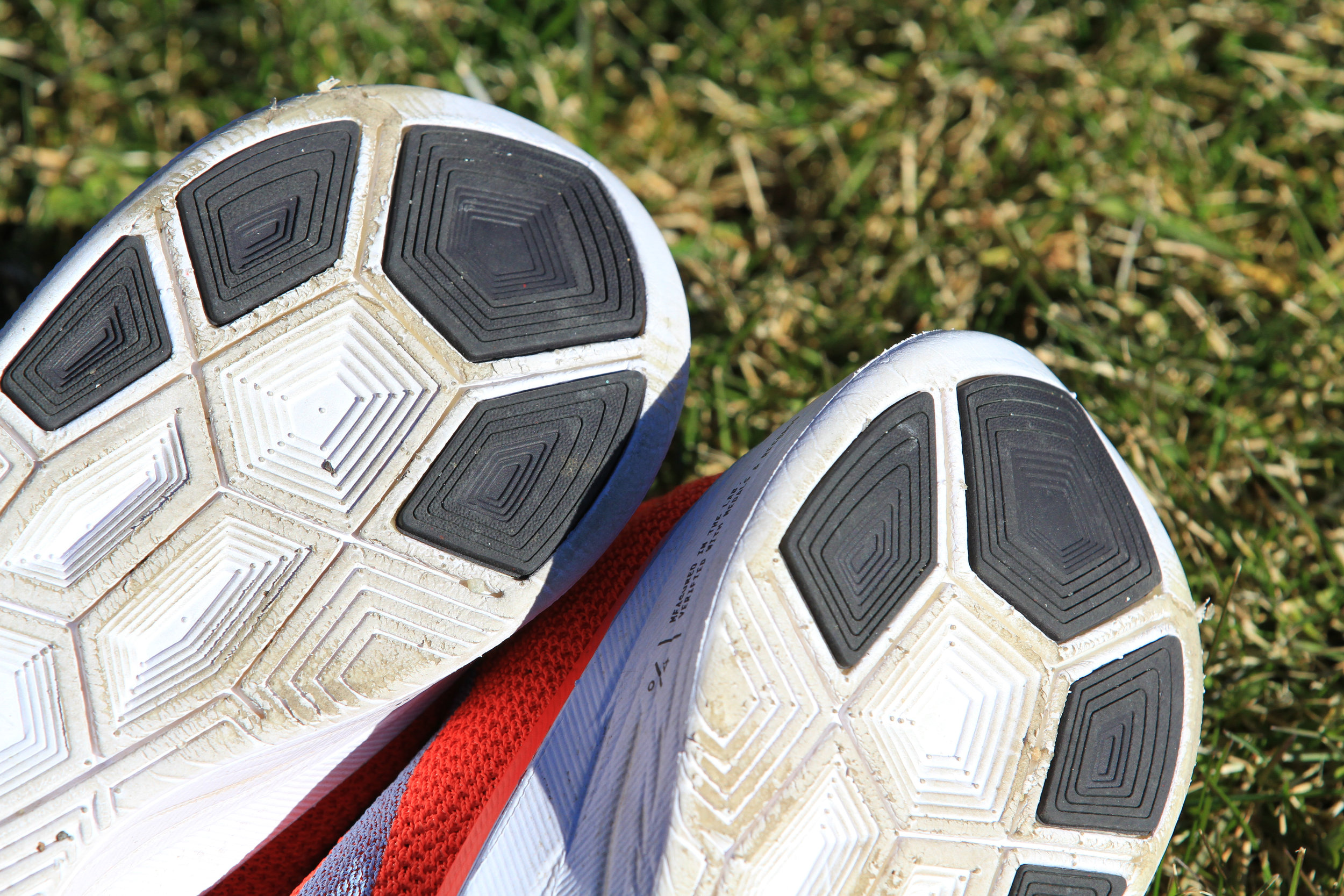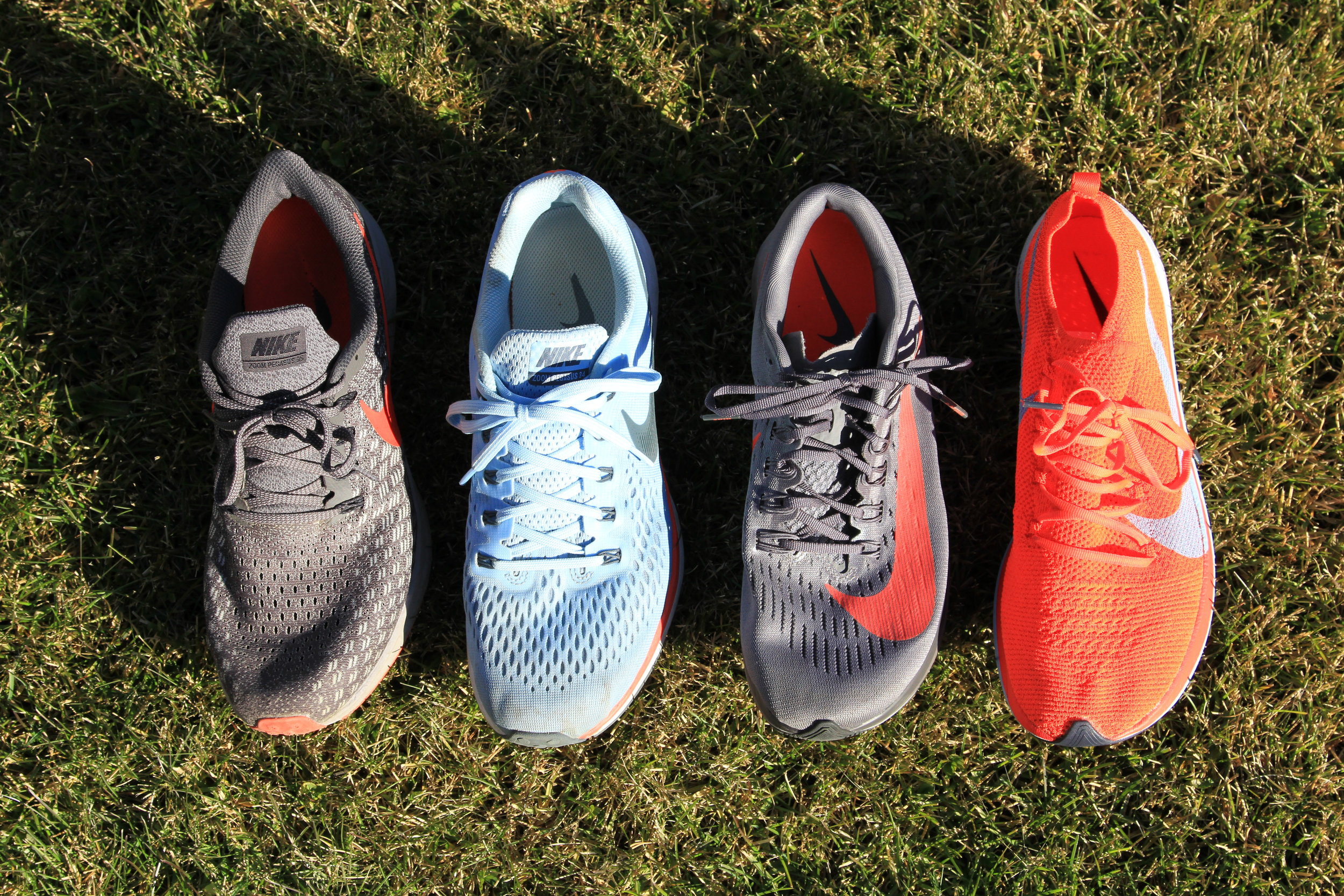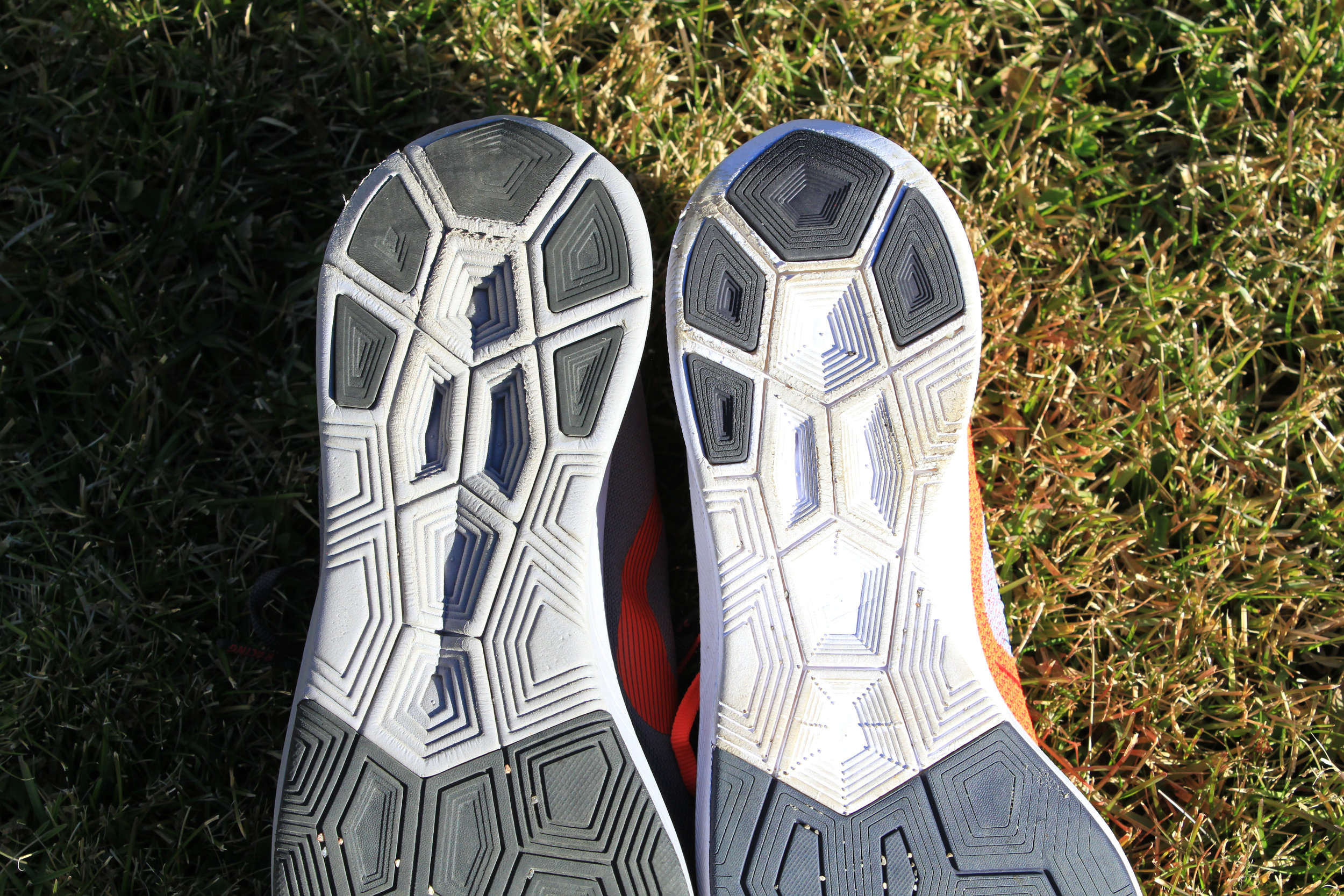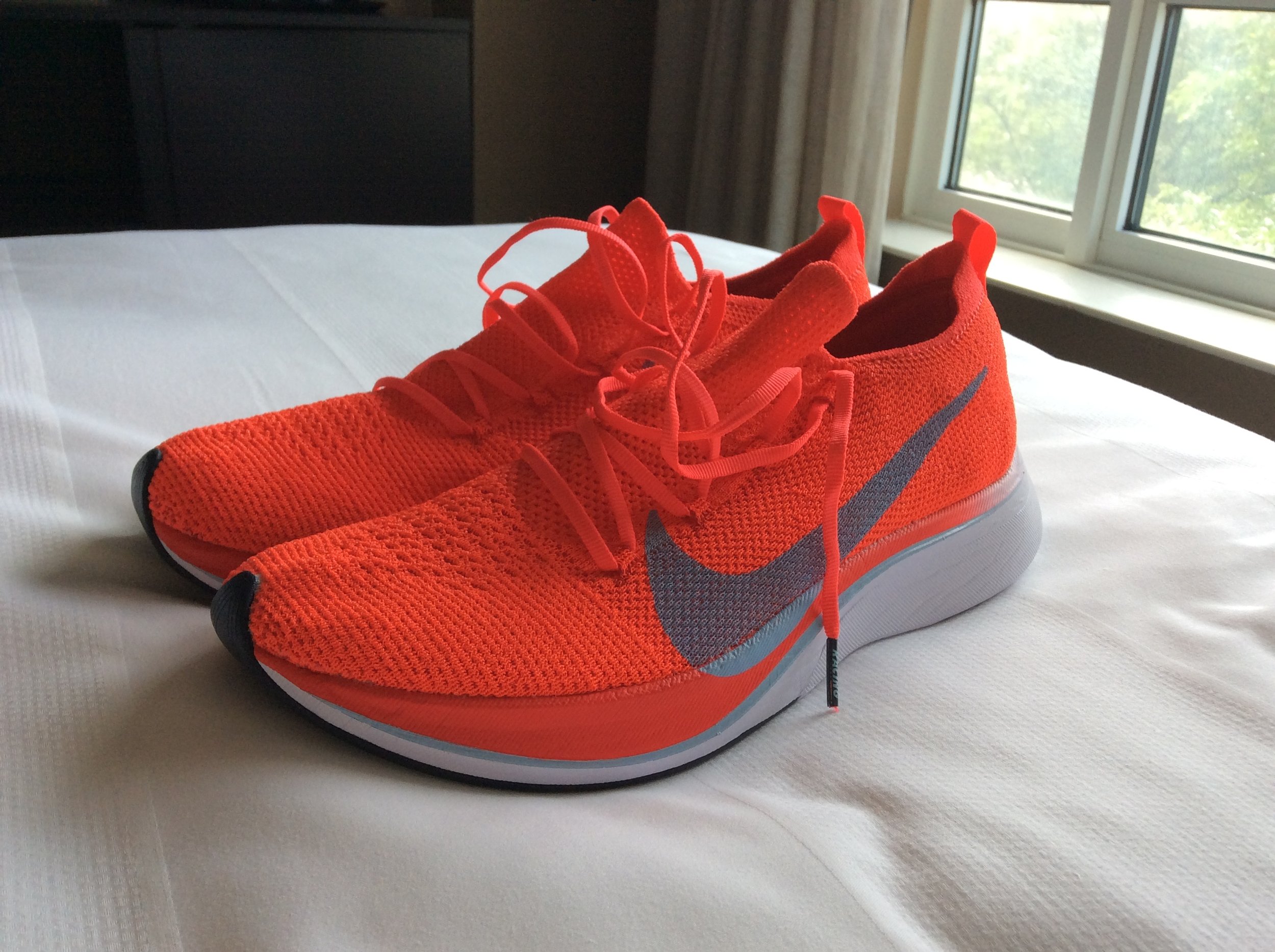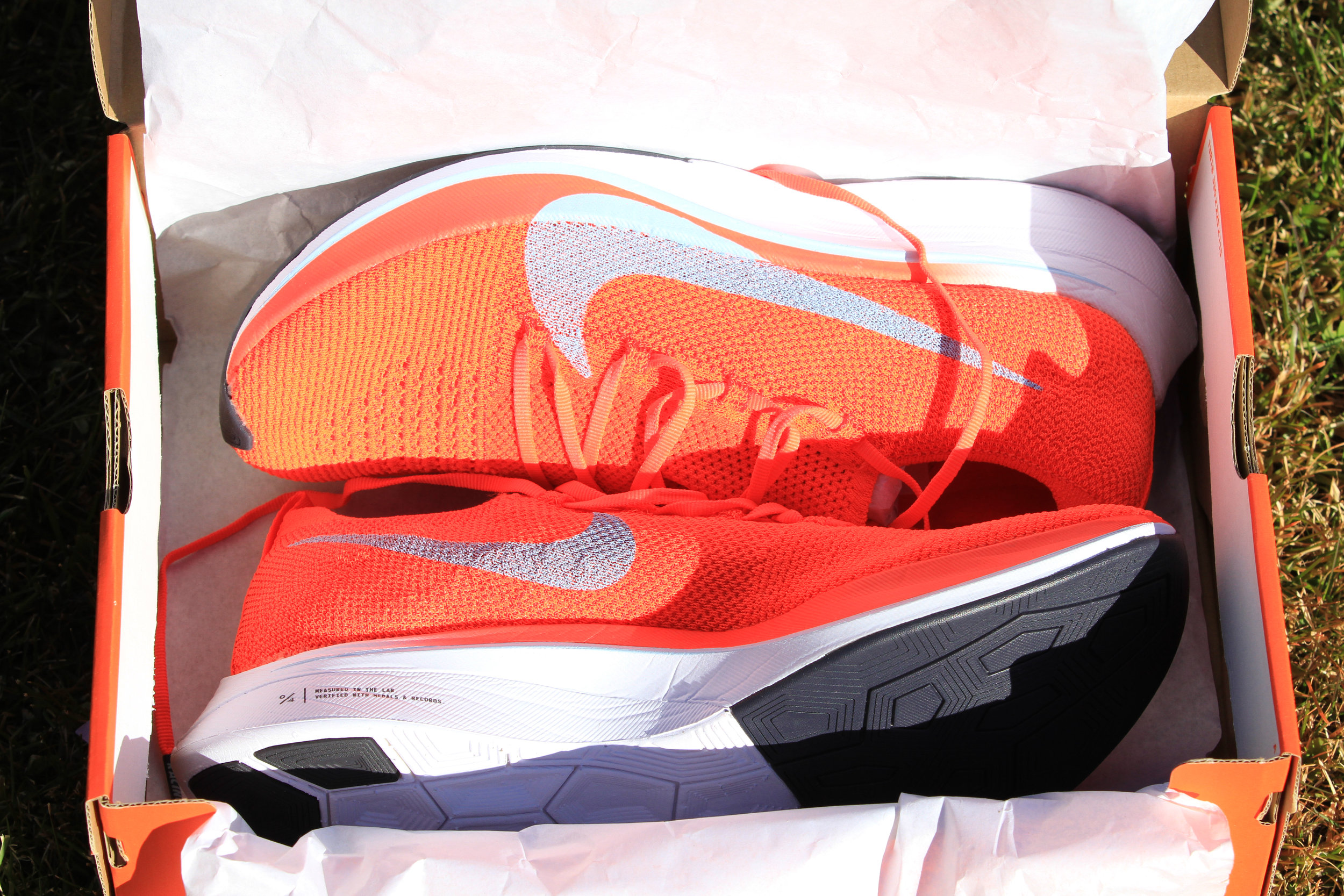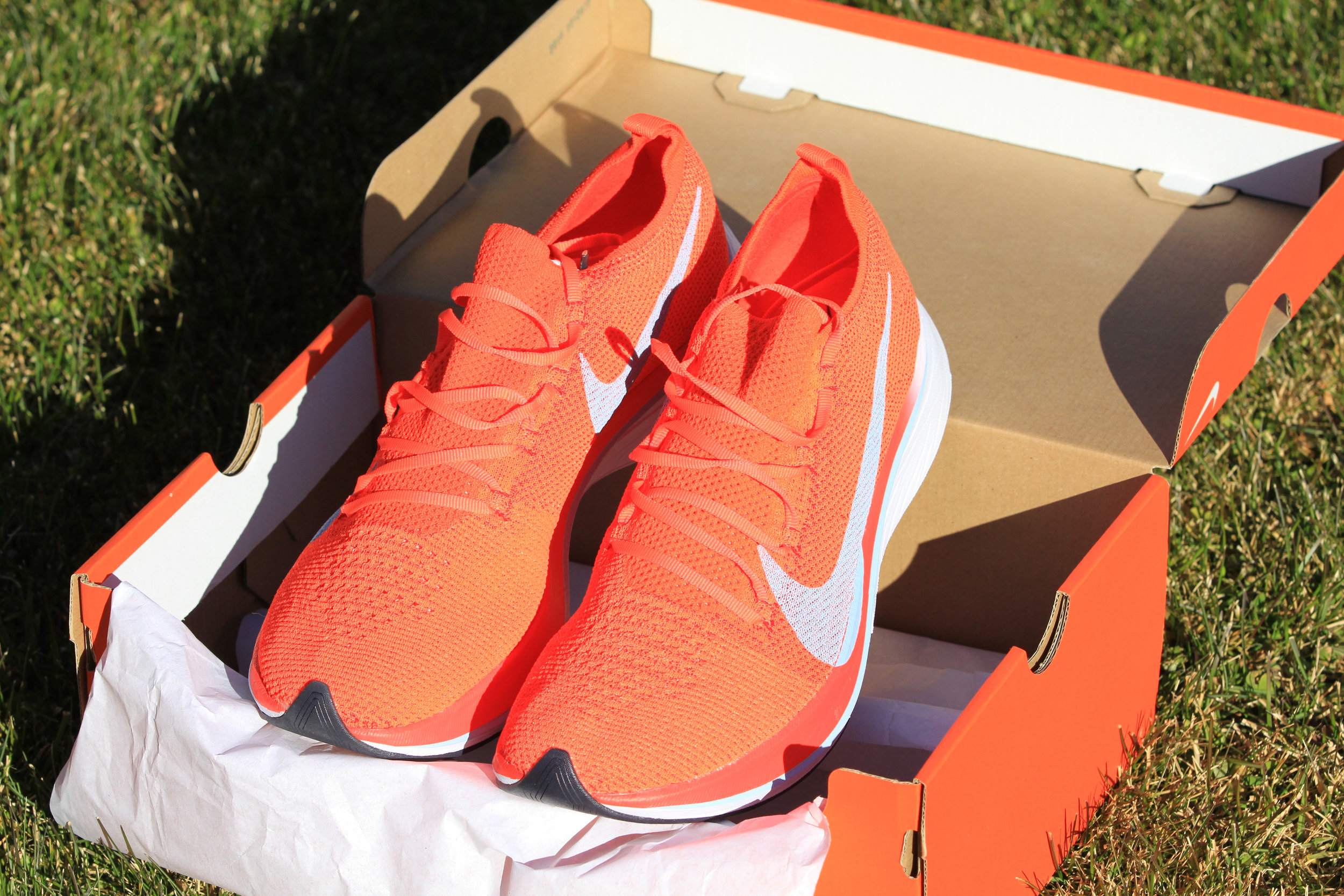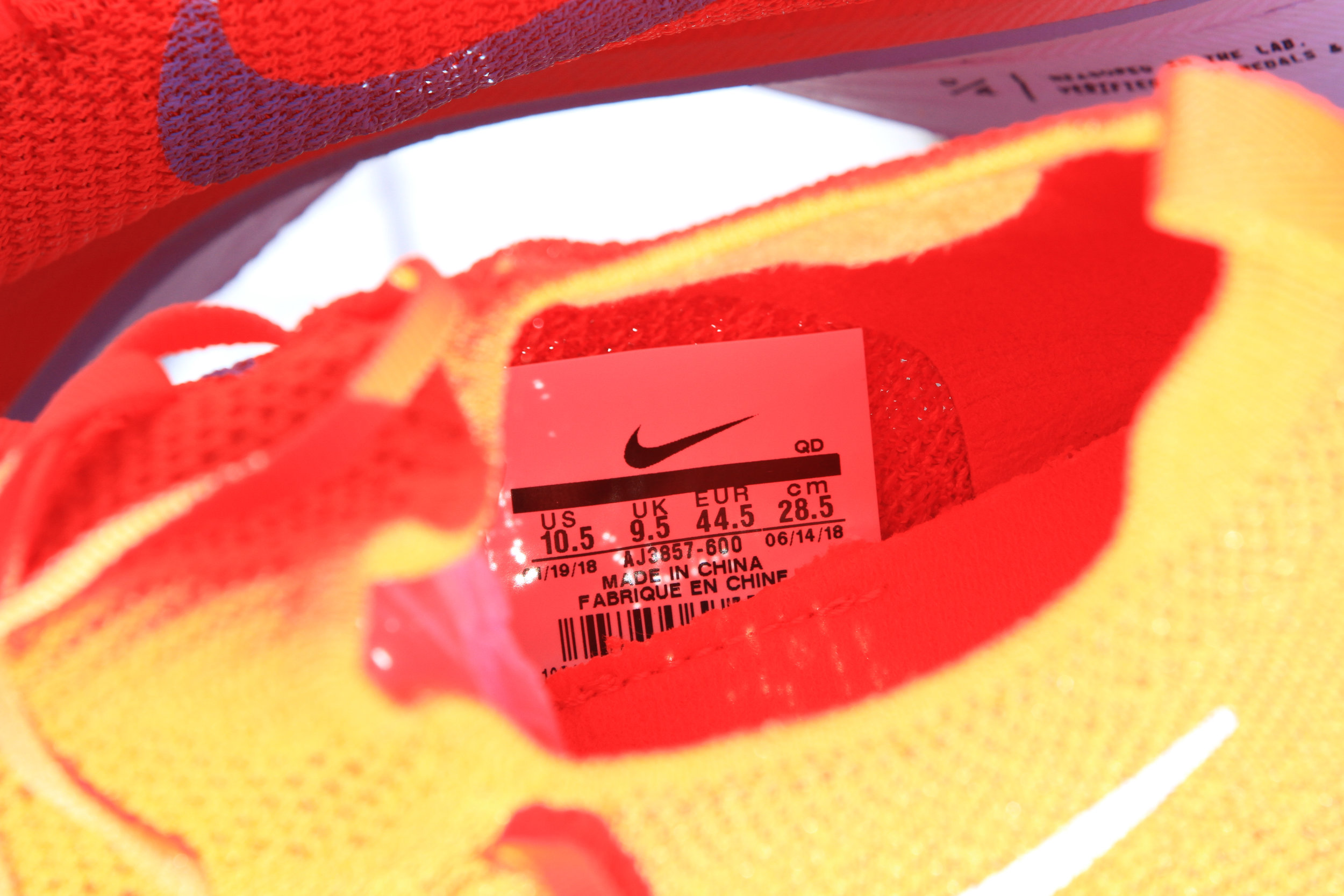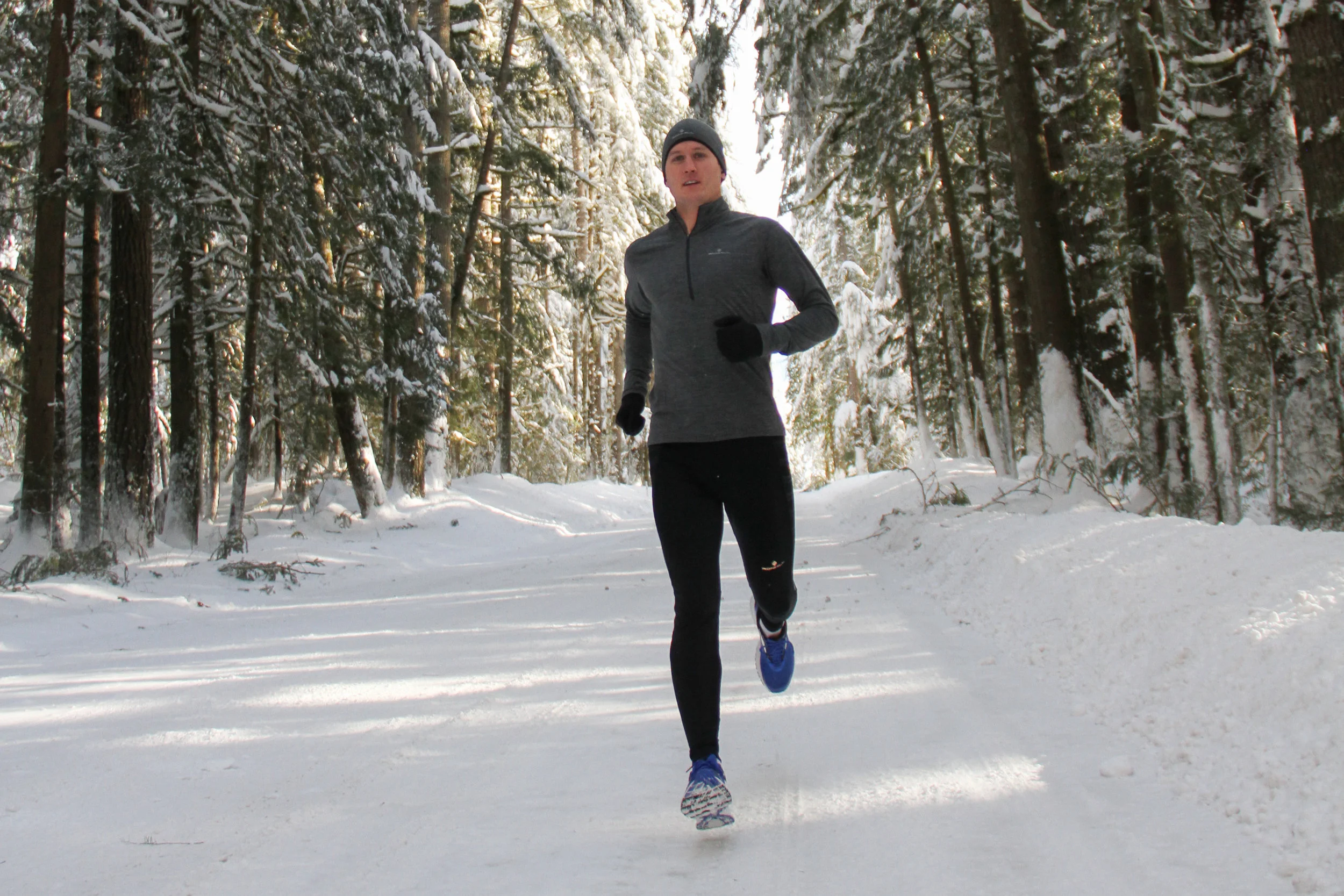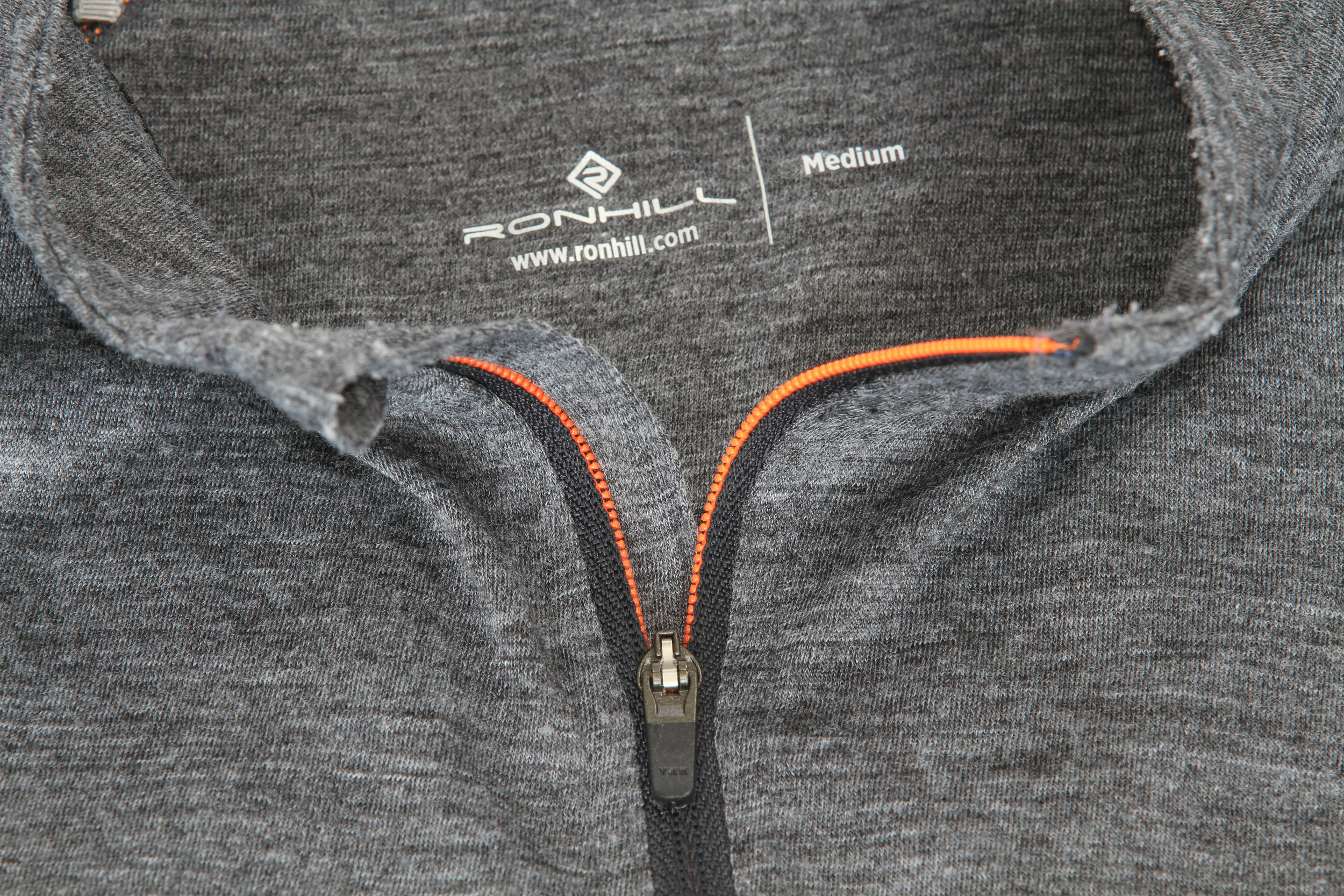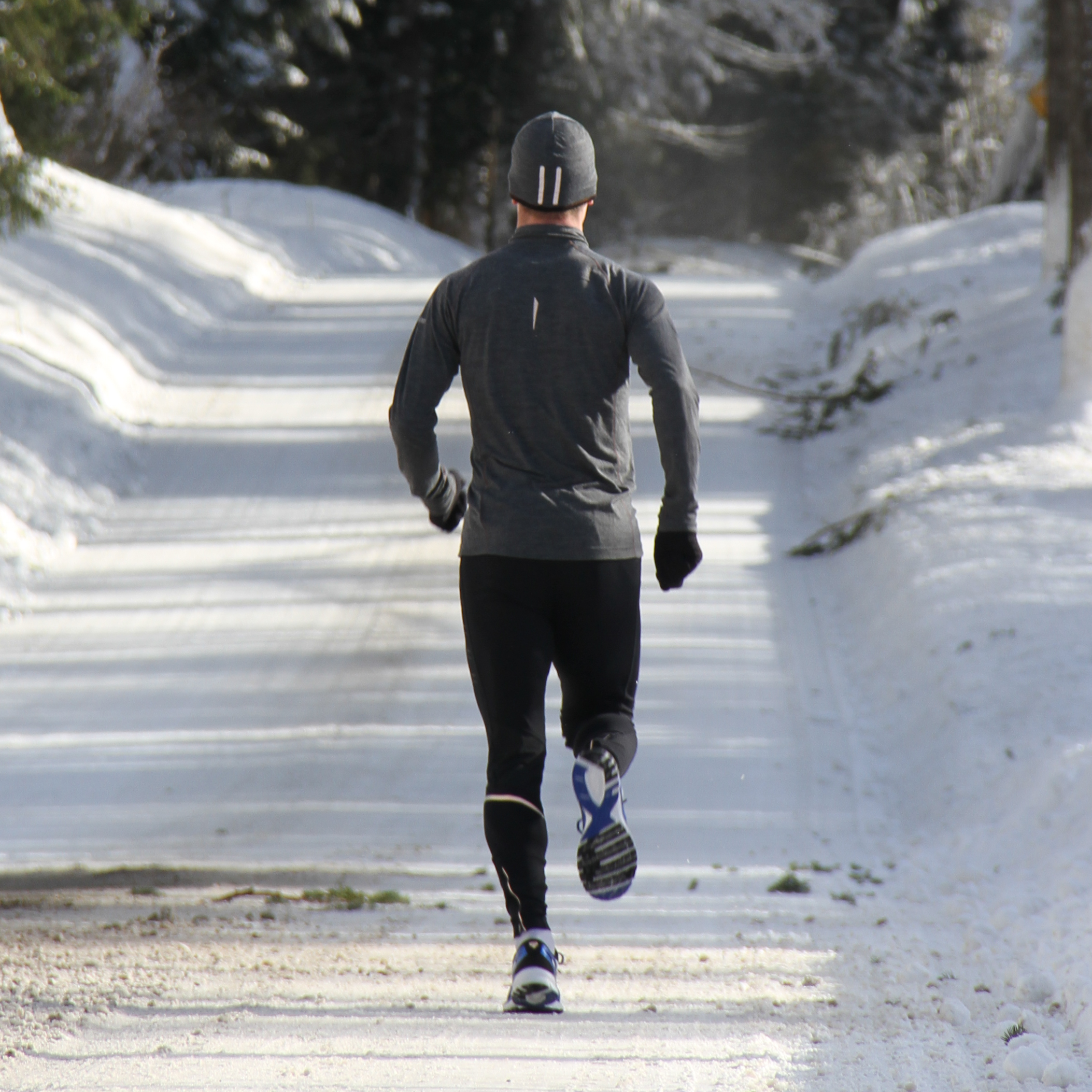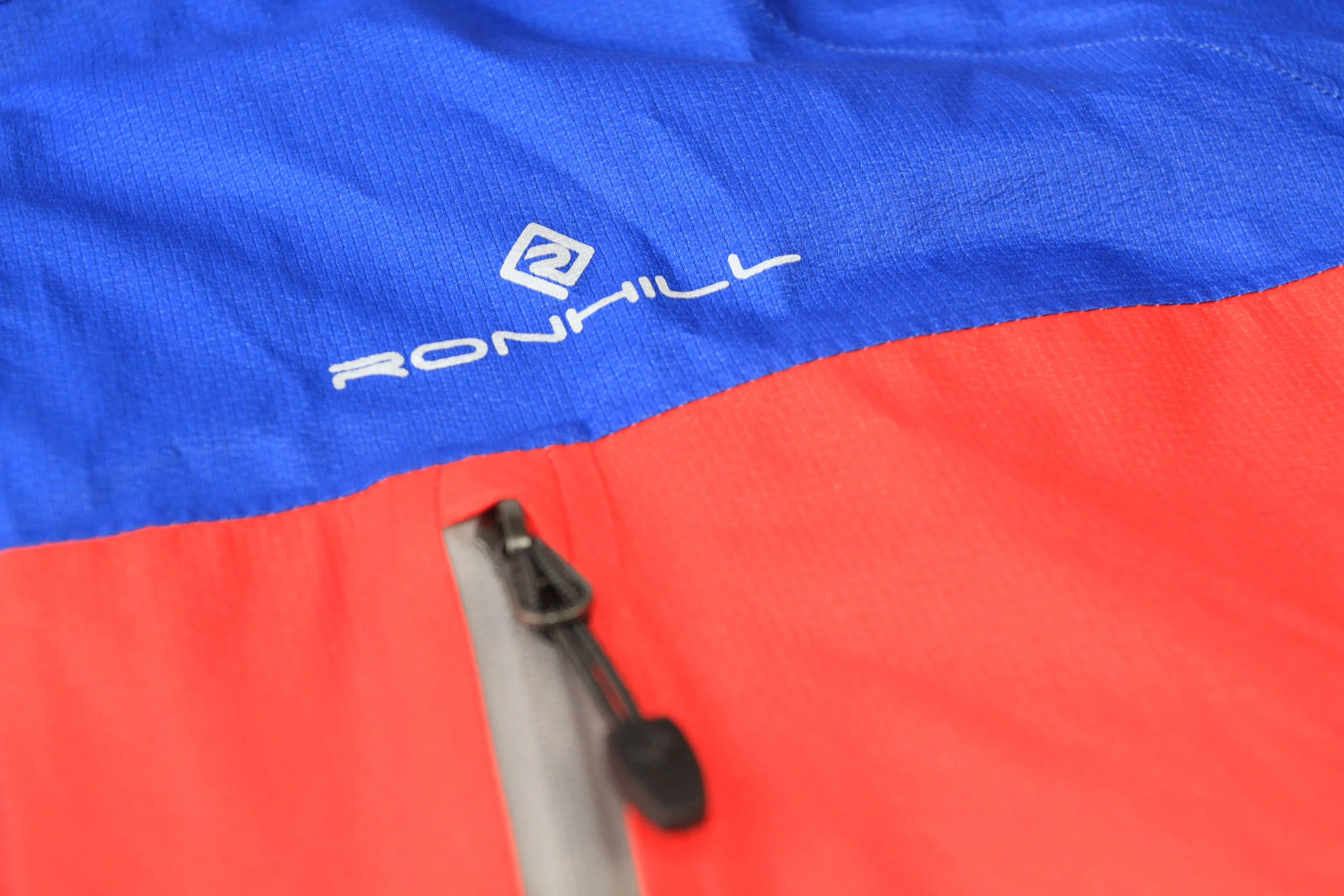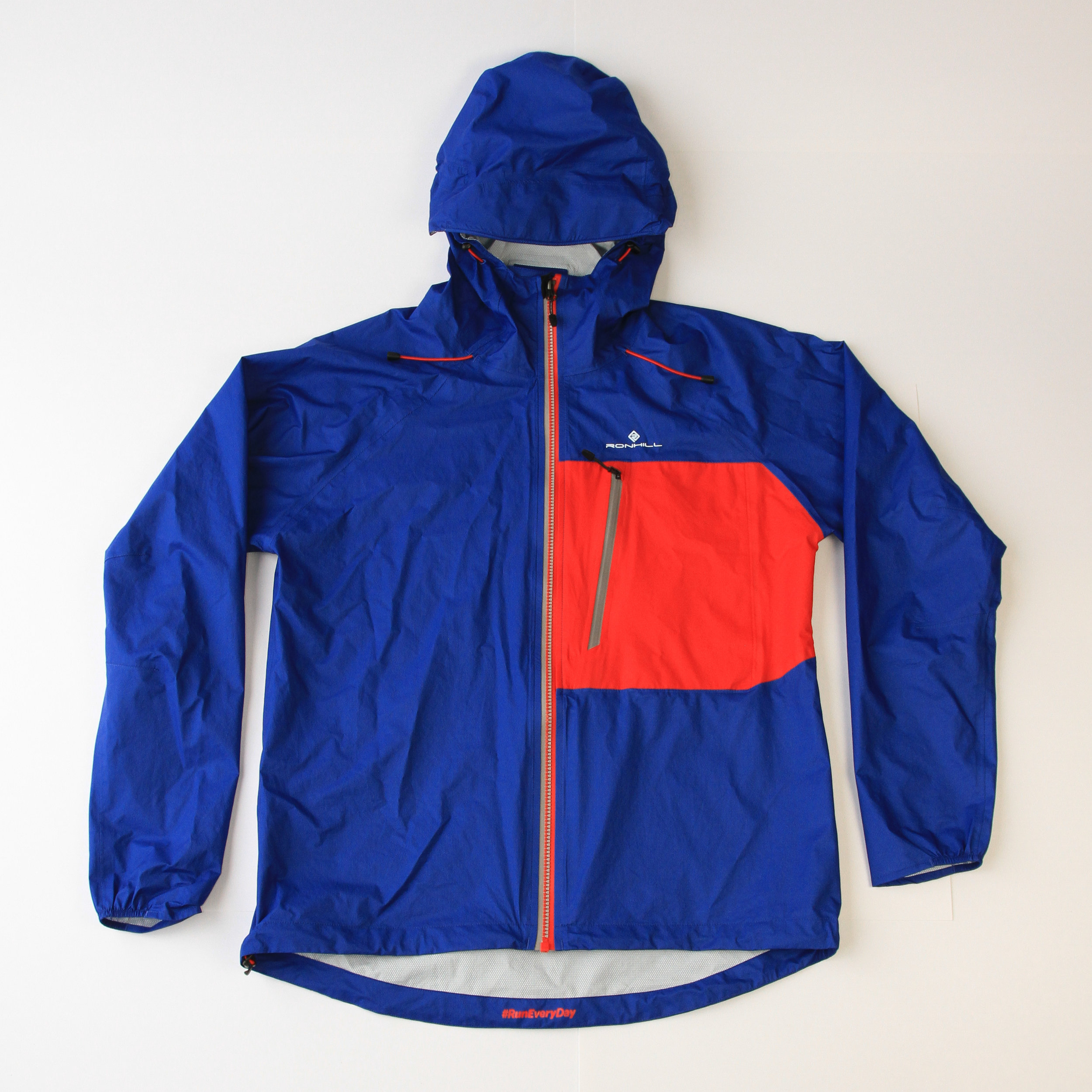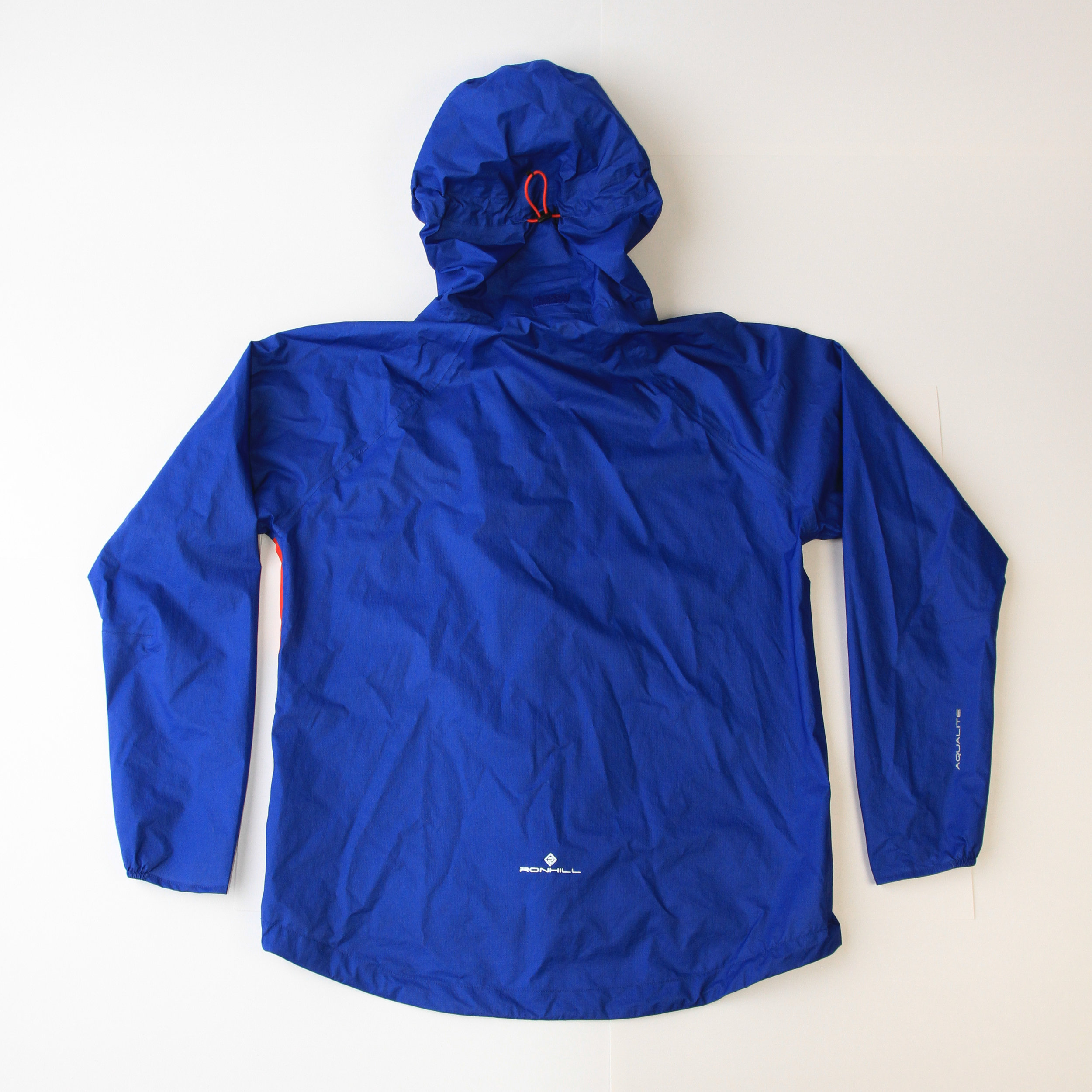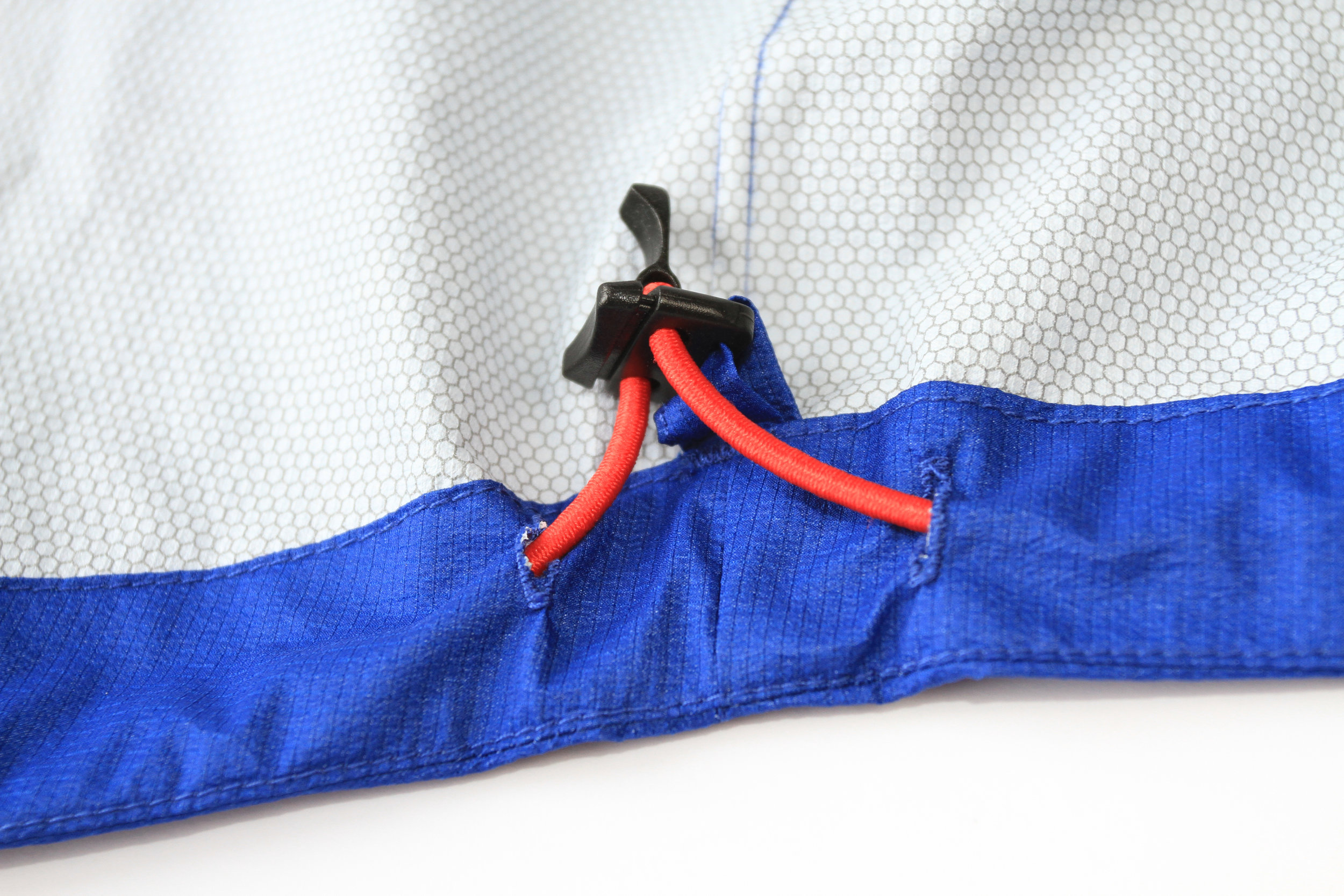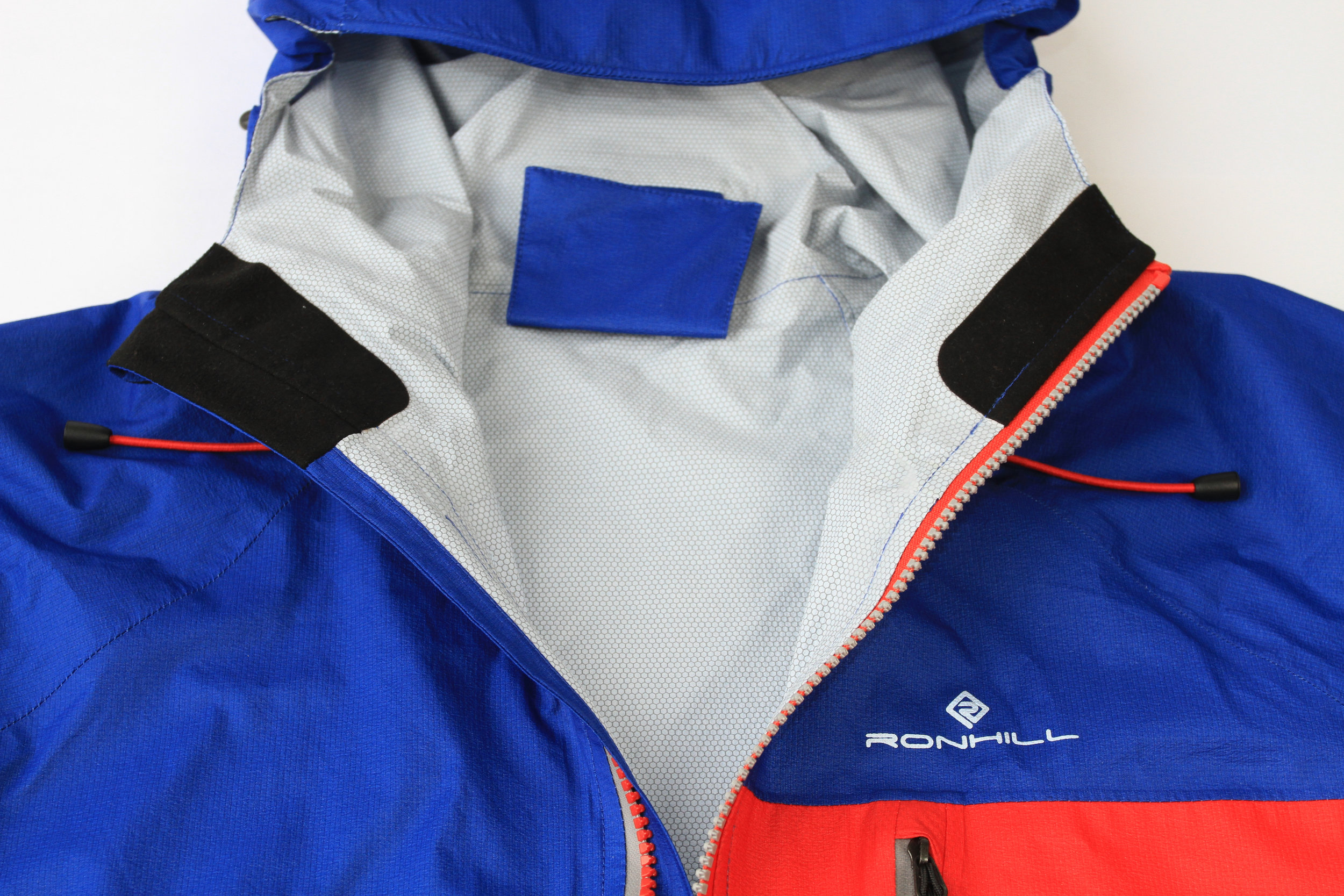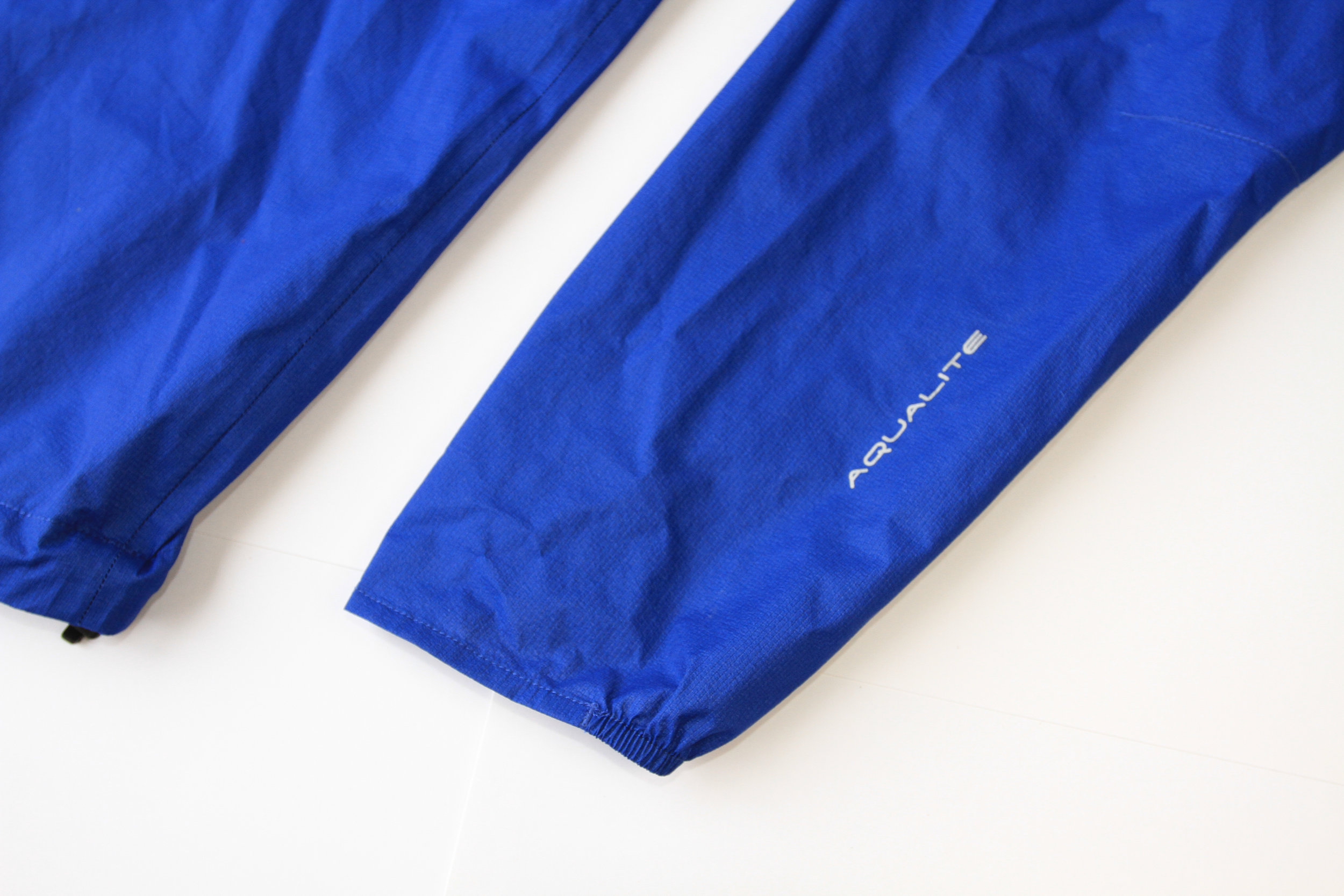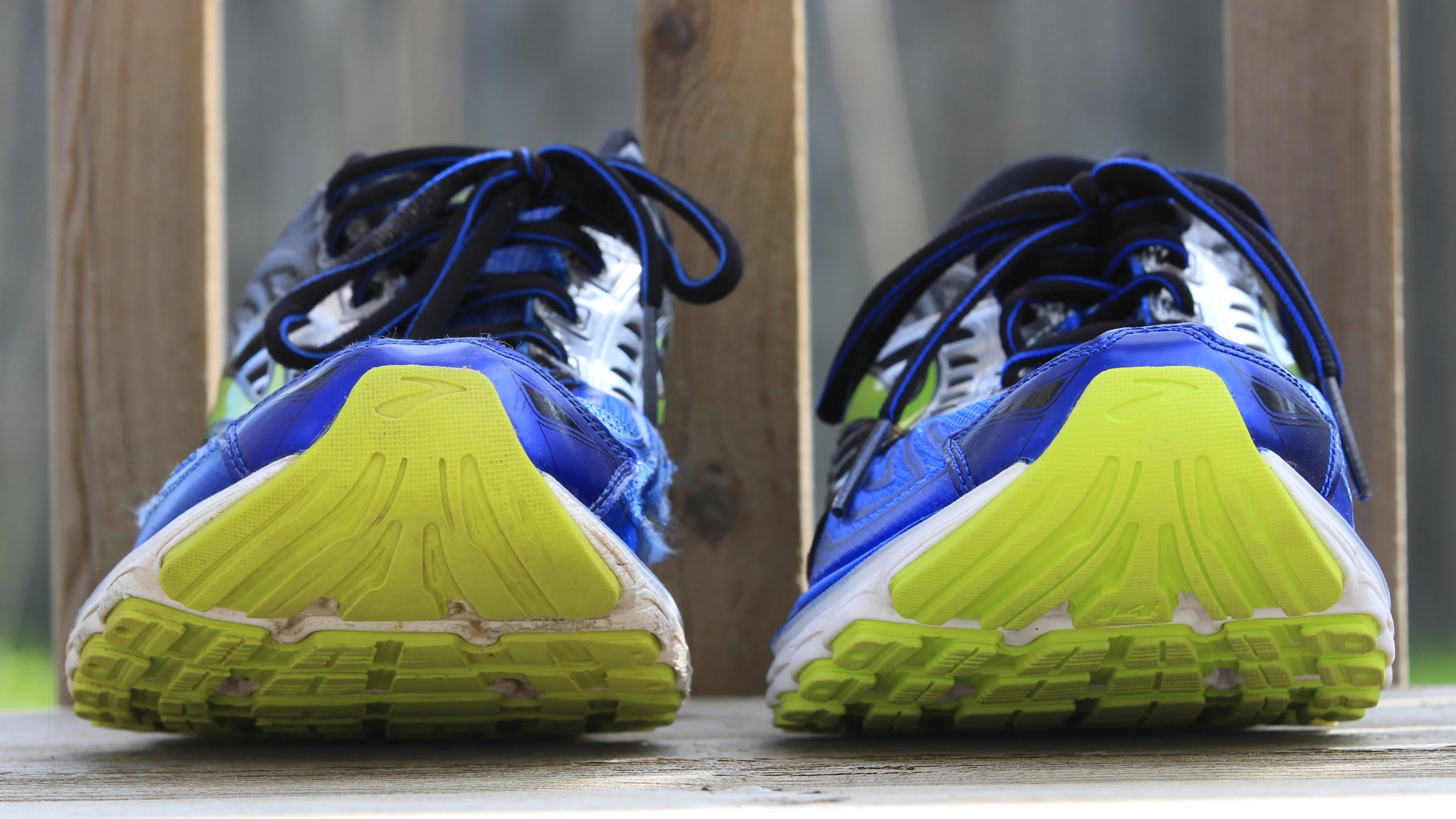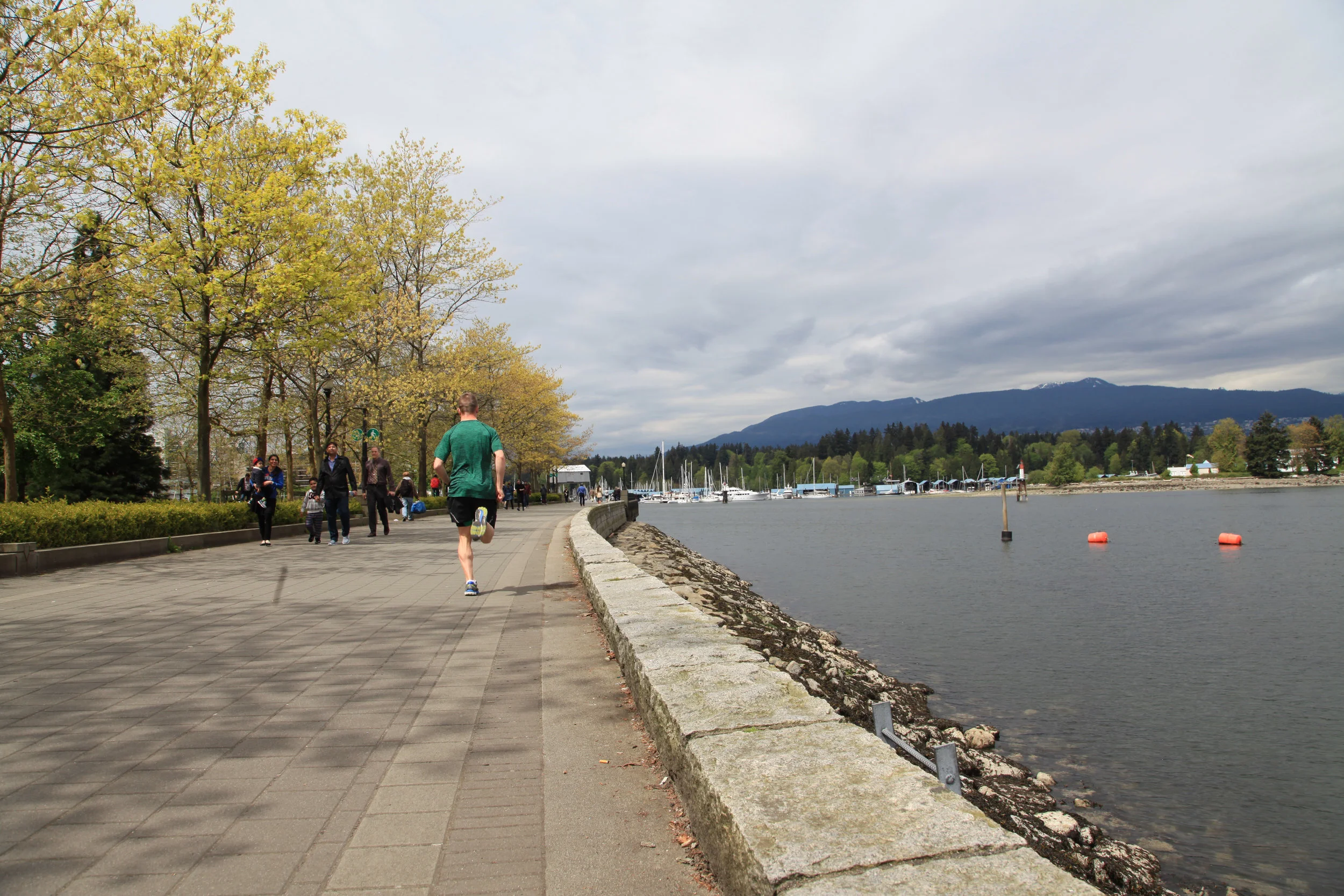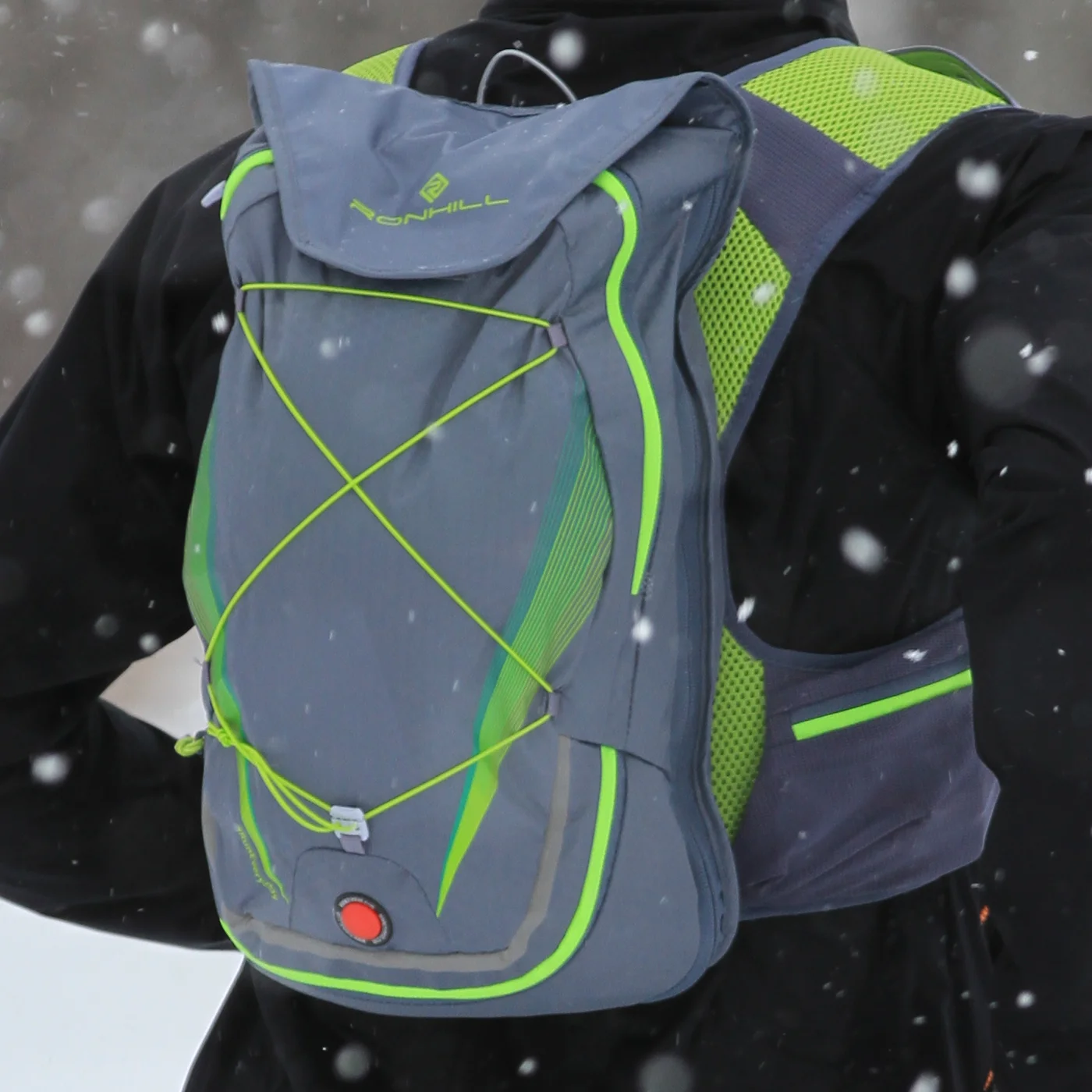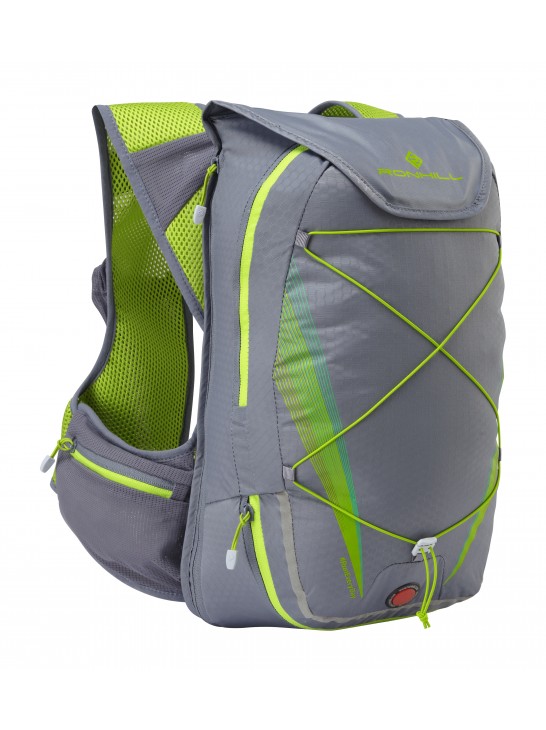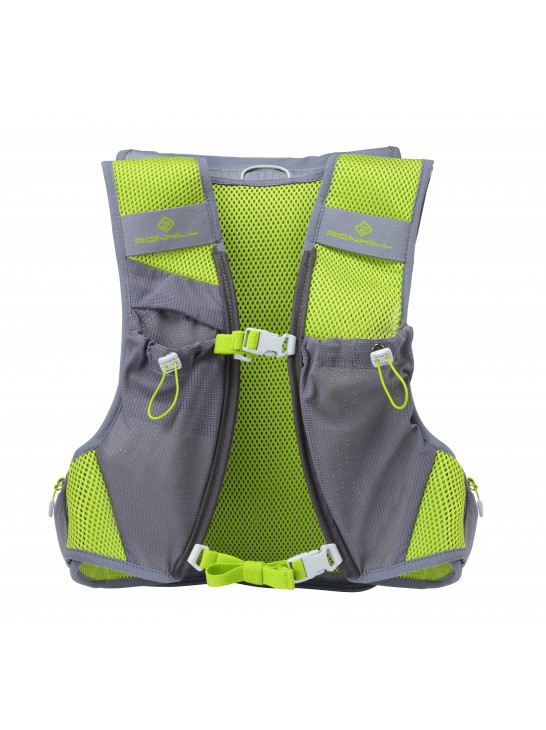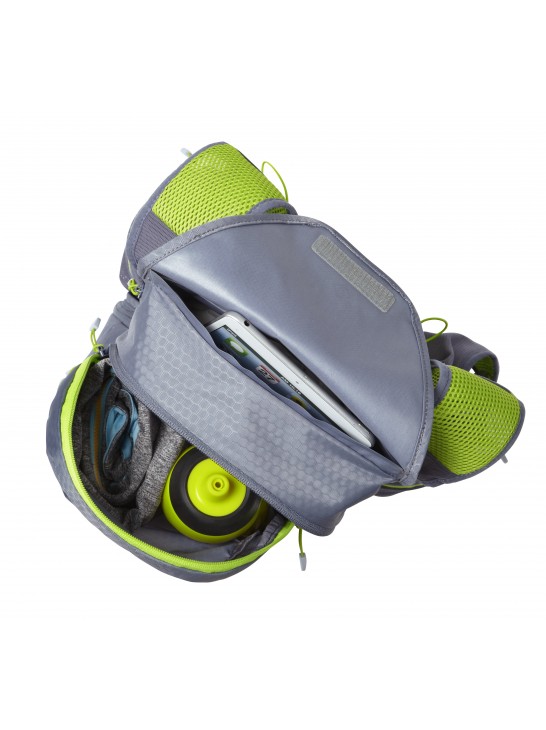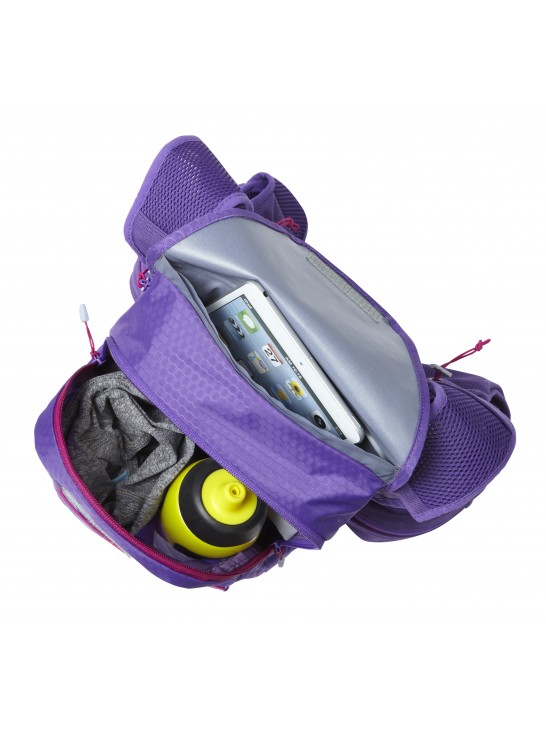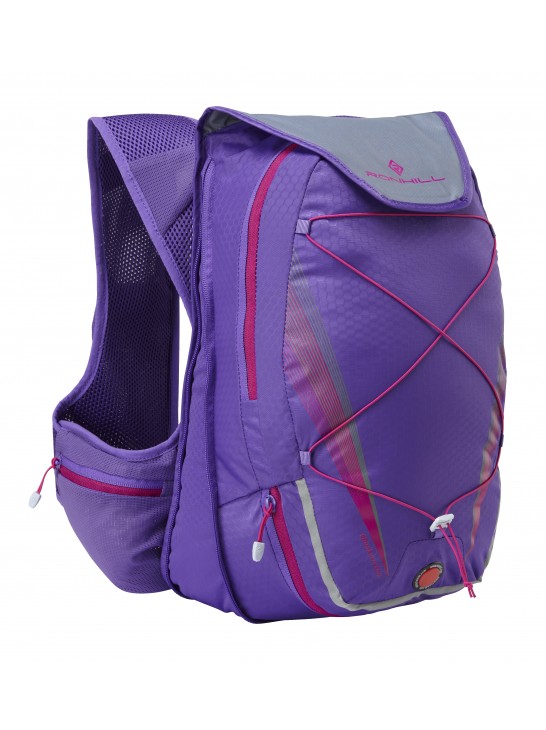By: Matt Setlack
This review will outline what I like and what I feel could be improved with the Ronhill Stride Windspeed Jacket. I have also photos of where in the world I have worn this jacket. I have been wearing various iterations and colours of this particular jacket for 3 to 4 years. I have easily run hundreds if not thousands of kilometres in this jacket and am very well acquainted with it.
Description
The jacket is made of a lightweight material that is quite breathable. There is a small zippered pocket on the upper left hand side. The blue/grey jacket shown below has two reflective stripes on the front and one reflective stripe on the back. Previous versions of this jacket, like the lime green one that I have, also had one reflective stripe on the outside of each wrist. The reflective stripes are nice to have because at least half of my run commutes are in the dark and this helps motorists see me better.
Regarding visibility, there is a small black circular rubber disk in the central back area (see photo above right) that stays secured in place inside a circular metal grommet. This black disk can be replaced by a red light disk that is the same size, and blinks. The exact same disk is found on the Ronhill backpacks such as the Ronhill Commuter Xero 10L + 5L vest backpack, which I wrote a review about here.
A feature that I really like is the soft black fabric around the neck area and also a strip of soft black fabric in your chin/front of neck area. I have never had any issues with chafing at all in this jacket. It is really comfortable. There is also a little hoop of fabric in the back that is used to hang up the jacket.
The zipper on this jacket works exceptionally well. There have never been any issues with snagging or catching the zipper in fabric. I typically start my run commute wearing this jacket and then take it off (while running) once I warm up after about 10 minutes. As shown in the photo below, there is a narrow strip of black material just behind the zipper, which helps to make the zipper slide very easily. The strip of material behind the zipper also prevents drafts from getting through.
The zipper pulls are nice and small (but still large enough to use even with running mitts on). They snap down in place and do not flip/flop up and down when you run, which is great.
The wrists are simple and effective. A section of the wrist is elasticized and I find the wrist opening to be perfect even while wearing a GPS watch or while wearing thicker fleece running mitts in the winter. The wrist material is cut in a way so that the outside of the wrist is slightly longer than the inside of the wrist.
The back of the jacket is longer than the front of the jacket. The blue/grey jacket shown below has elasticized sections on each side of the waist. Previous versions of this jacket had a thin bungee cord that ran along the inside bottom perimeter of the jacket.
The black rubber disk is shown in the back centre.
What I Like
Simplicity of Design - It is a really good, simple, functional design that has undergone minimal change, which I like.
Lightweight - it packs up really small and is so lightweight that I can carry it in one hand even for long runs of 30 km or more.
Breathable - the material is wind resistant and water resistant, which to me is preferable over a jacket that is waterproof and therefore less breathable.
What I Feel Could be Improved
There is one zippered pocket in this jacket. The nice thing about this pocket being zippered is that you can pack the jacket up into this pocket and then zipper it shut. You can also put a map, keys, credit card, gels, etc in this pocket and nothing will fall out.
The upper end of the zipper has a sheath of fabric that covers the zipper pull (see photo below). This sheath prevents water from entering the pocket when the pocket is zippered up and it is raining.
There is also a fabric sheath on the bottom of the pocket but the length of this fabric sheath is too long. As shown in the photo below, the zipper pull is completely submerged beneath the fabric sheath. When this happens, it is a little annoying to fish the zipper pull out with your fingers. I suggest that the zipper sheath on the bottom of the pocket be shortened.
The photo below shows the Ronhill Stride Windspeed jackets that I own from oldest on the left (lime green) to newest on the right (lighter blue). As you can see, the black circular rubber disk in the back centre of the jacket has gradually moved up as the various iterations of this jacket have been released. The oldest version is the lime green one on the left and the newest version is the light blue/turquoise one on the far right.
I personally feel that this was not a good decision and there are two reasons. First, while sitting/driving in my car before and after a run while wearing this jacket, the black disk is uncomfortable when I lean back into the seat because it gets right in between my spine and the car’s seat. When the black disk was lower down on the back like in the lime green jacket, the disk would fit in the “small of my back” and I would not notice it while driving. When the black disk is removed, the discomfort goes away.
Secondly, when I am wearing my Ronhill Commuter Xero 10L + 5L vest pack on the run commute to and from work everyday, the black disk is right in between my spine and the Ronhill backpack, making it uncomfortable. In addition, the black disk is so high in the lighter blue jacket that the backpack covers up the disk. If I did have a red blinking light in place of the black disk, the light would be completely obscured by my Ronhill backpack.
In terms of the reflective stripes, I like that the newer jackets (lighter blue, on the right) have a reflective stripe in the lower back of the jacket. This location makes the reflective stripe still visible while wearing a Ronhill backpack. The reflective stripes on the older lime green and darker blue jackets were obscured when wearing a backpack.
The older lime green jacket had reflective stripes on the outside of each wrist. I liked the location of these stripes because it made me more visible to motorists from the side (laterally). The wrist reflective stripes are no longer on the newer darker blue and lighter blue jackets.
Places I have Worn this Jacket
Kananaskis 100 Mile Relay Race (K100)
Philadelphia, Pennsylvania, USA
Philadelphia Half Marathon in Nov 2017 - you might recognize that arched bridge because it was in one of the Rocky movies.
Colorado Springs, Colorado, USA
This was just before the Hams and Hamstrings 5k at 7,000 feet ASL in Colorado Springs in Apr 2017. It is the perfect warm-up jacket. I placed 2nd in that race. 1st place was local resident (and world mountain running 2016 champion), Joe Gray.
Pikes Peak, Colorado, USA
Running above 14,000 feet ASL.
Bulgaria
This was what I brought on my way up Masala Peak, the highest peak in Bulgaria. I ran up this peak after the World Mountain Running Championships in 2016.
Cold Lake, Alberta, Canada
This was when my wife, Emily and I ran across Cold Lake and back in January. For a post about it, click here. The lake is massive; about 25km across and nearly 100m deep.
On my daily run commute to and from work all year around.
Edmonton, Alberta, Canada
It was more than a little cold. I believe the temperature was around -30C. Cold Lake is farther north than Edmonton and it gets noticeably colder there.
Mount Charleston, Nevada, USA
Port d’Envalira, Andorra
Running above 2,400m ASL.
Font Romeu, France
At the National Altitude Training Centre. Font Romeu feels a lot like Flagstaff, Arizona, USA.
Conclusion
Overall, the Ronhill Stride Windspeed Jacket is the best running jacket I have ever worn in my life. I have worn various versions of this jacket for thousands of kilometres and am very impressed with it. If you have any questions or would like more information about it, please feel free to contact me via the “Contact” link at the top right of this page.
Thanks for reading!



